Driver Reviews
2014 Gear Trials: Best Drivers
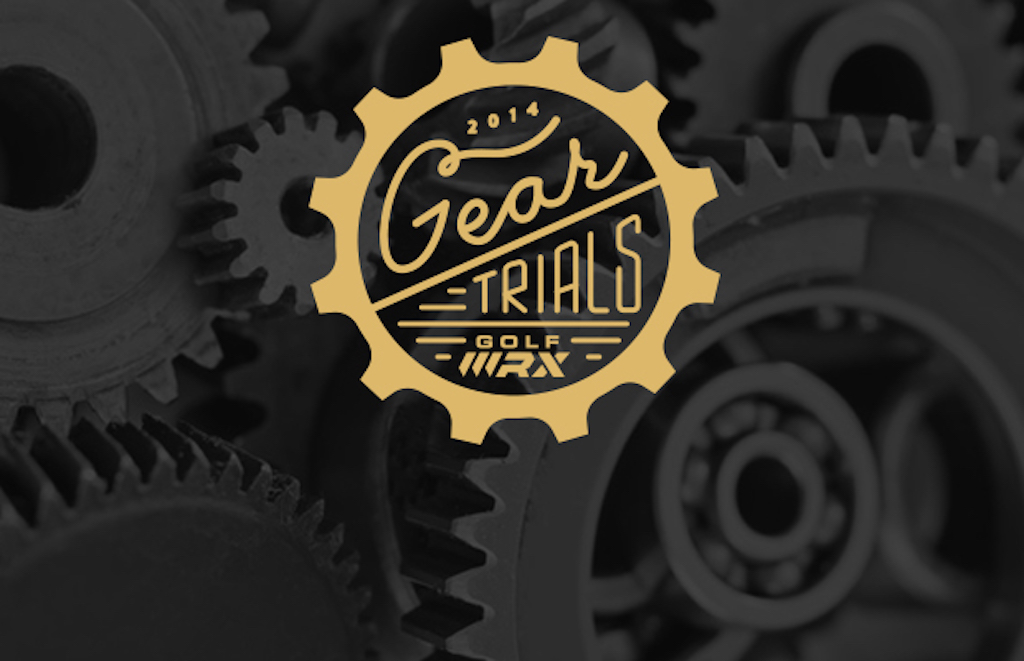
It all starts with the right questions.
Ask a group of serious golfers what’s the best new driver, and you’ll get a long list of answers. But ask those same golfers what the best new driver is for them, and the list becomes shorter.
Our list of this year’s best drivers, which we’ve renamed “Gear Trials” for 2014, started a simple question:
“How do we make it easier for golfers to choose the best driver for them?”
As a result, we’ve separated this year’s list of best drivers into three different categories. The golfers who are looking to maximize distance should pay special attention to our “Distance-First” category, while golfers who want the most forgiving drivers on the market will want to take a look at our “Forgiveness-First” category. What about the golfers who want both? We know that there’s plenty of them out there, so we created a “Balanced-Performance” category, which represents drivers that offer the best mix of distance and accuracy.
Click here to see who made our 2014 Gear Trials: Best Fairway Woods list.
Who votes?
Now for the toughest question we had to answer: How do we create such a list?
In the past, we relied on both the feedback of our equipment editors and an elite panel of custom fitters located across North America. For this year’s list, we decided we needed another component: mass player testing of every major manufacturer’s driver performed by fitters at Miles of Golf in Ypsilanti, Mich. Those fitters spent eight days with 33 different testers of various ability levels evaluating a total of 22 different driver heads. Each driver was tested with its stock s-flex shaft and set as close to the stock loft of 9.5 degrees as possible. The data was then normalized by the team at Miles of Golf in order to rank each driver’s launch, spin and smash factor.
After the data was collected, we surveyed our five other top custom fitters located across North America — Carl’s Golfland, Modern Golf, Morton Golf and two other custom fitters who chose to remain anonymous on the top performing driver heads in each category.
The scoring process
Unlike in year’s past, this year’s scores were entirely based on the performance of each driver head, removing the subjective categories of looks, sound and feel from the equation. What was left was the votes of our custom fitters (60 percent of a driver’s score), the results of our mass player test (30 percent of a driver’s score) and the votes of our staff members (10 percent of a driver’s score).
Now that we’ve added up the scores, we present to you the 10 absolute best drivers in golf. We consider each of these drivers to be a winner, which is why they’re listed in alphabetical order (Note: You can click the images of each driver to enlarge the text).
Distance
A proper fitting is key to maximizing distance with any driver, but it’s particularly important in this category because of the tendency of these drivers to launch lower and with less spin than other models. Each of these drivers also has a center of gravity that is lower and more forward than their predecessors. That means they’re not forgiving as others, but when these drivers are paired with the proper launch conditions, which usually means “lofting up,” golfers can hit them noticeably farther than higher-spinning drivers.
Tech Talk: Callaway’s Big Bertha Alpha ($500) is the most adjustable driver in company history. Its most intriguing feature is its Gravity Core, a weighted stick that can be inserted into the center of the driver head in two different orientations. Inserting the Gravity Core with its heavy side down will lower spin, while inserting it with its light side down with raise spin. This decouples the Alpha’s spin characteristics from its launch angle, which according to Callaway engineers can lead to breakthrough distance gains for certain golfers.
The Big Bertha Alpha also has two moveable weights of 7 grams and 1 gram that can be switched between the driver’s heel and toe weight ports to create more draw or fade bias. These adjustability features were fueled by the driver’s Forged Composite crown, a lightweight construction that gave engineers more discretionary weight in the head.
Like the company’s Big Bertha driver, it measures 460cc and has the company’s Advanced OptiFit Hosel that gives golfers a 3-degree range of adjustability. That allows the Alpha’s stock lofts of 9 degrees and 10.5 degrees to be adjusted from 8 degrees to 11 degrees and 9.5 to 12.5 degrees, respectively, in 1-degree increments. Each loft can also be paired with a neutral lie setting, as well as a more upright “D” lie setting that creates more draw bias.
Read our review of the Alpha | Buy the Alpha
Tech Talk: The Nike Team redesigned the second-generation Covert Tour, or Covert 2.0 Tour driver, with a larger, more traditional pear-shaped head that not only improves the look of the club, but vastly improves its forgiveness.
The Covert 2.0 Tour ($399) has an impressive stock shaft option, Mitsubishi Rayon’s Kuro Kage Silver TiNi 60, as well as one of the most wide-ranging adjustable hosels on the market. Golfers can set the Covert drivers to lofts of 8.5, 9.5, 10.5, 11.5 and 12.5 independent of the driver’s three face angle settings: left (closed), neutral (square) and right (opened), creating 15 unique settings.
Like the standard, or Performance driver, the Tour model has Nike’s signature high-speed cavity design, a hollowed out section on the rear portion of the driver’s sole that increases the driver’s forgiveness. That technology was updated for 2014 with Nike’s new Fly-Brace technology, which adds stability and increases energy transfer to the ball.
Read our review of the Covert 2.0 Tour | Buy the Covert 2.0 Tour
Tech Talk: A lot of the discussion around the i25 has been about its eye-catching racing stripes located on the crown of the driver. What’s more important from a performance standpoint, however, is Ping’s ability to lower the spin of the i25 while still maintaining a high level of forgiveness.
The i25 is Ping’s lower-launching, lower-spinning counter part to its extremely popular G25 model, using a shorter profile from front to back and 15 grams of tungsten weights on the rear of its sole to lower the driver’s center of gravity. Like the G25, the i25 has Ping’s Trajectory Tuning Technology that allows the stock lofts of 8.5, 9.5 and 10.5 degrees to be adjusted 0.5 degrees higher or lower from their standard lofts.
The i25 comes stock with the company’s new PWR shafts in weights of 55, 65 and 75 grams, each of which has a balance point that has been tweaked to to allow golfers to maintain the club’s stock swing weight of D3 (at 45.25 inches) regardless of what shaft weight or flex they choose.
Tech Talk: TaylorMade’s JetSpeed is the first of the company’s drivers to incorporate a “Speed Pocket,” a polymer-filled slot on the front of the sole that increases ball speed and lowers spin on shots struck below the center of the face. Its center of gravity is also lower and more forward than its predecessor, the company’s RBZ Stage 2 driver, to create the high-launch, low-spin conditions that lead to more distance.
Like the company’s SLDR driver, the JetSpeed has TaylorMade’s 3-degree adjustable hosel that allows golfers to tweak loft up or down 1.5 degrees the driver’s stock lofts of 9.5, 10.5 and 13.5 degrees in 0.5-degree increments. Length-conscious golfers should note that the JetSpeed comes stock with a 46-inch shaft and a swing weight of D5.
Read our review of the JetSpeed | Buy the JetSpeed
Tech Talk: Since TaylorMade released golf’s first adjustable driver, the R7 in 2004, the adjustability features of its drivers became increasingly complex with every launch. The SLDR is a step toward simplicity, however, with a sliding weight track located on the front of the sole that concentrates the driver’s weight low and forward in the head to lower the driver’s spin.
Because of the low, forward CG, the SLDR usually requires golfers to add as much as 2 degrees more loft than they’re used to playing for optimal launch conditions. For that reason, the SLDR is available in lofts of 12 and 14 degrees, as well as the more traditional lofts of 10.5, 9.5 and 8 degrees. While the SLDR has the same 3-degree adjustable hosel as the JetSpeed driver, it’s more adjustable thanks to its sliding weight track, which houses a 20-gram weight that can create as much as 30 yards of left-to-right trajectory bias.
The SLDR’s stock shaft measures 45.5 inches and it has a stock swing weight of D4. Starting May 2, the driver will also be available with a white-painted crown. A 430cc model, the SLDR 430, is also available in lofts of 9.5, 10.5 and 12 degrees for golfers who need even less spin than the SLDR 460 can deliver.
Read our review of the SLDR | Buy the SLDR
Forgiveness
Distance is the No. 1 concern of most golfers who decide to go through a driver fitting, but it doesn’t always lead to lower scores. These “Forgiveness-First” drivers are plenty long, but they also have extremely high levels of forgiveness to maintain ball speed on off-center hits. Their increased forgiveness also limits gear effect, or the rotation of the club head on mishits. That helps spin rates remain more consistent on shots that miss the sweet spot, limiting hook and slice spin.
Tech Talk: Callaway has five different drivers on the market for 2014 — the Big Bertha, Big Bertha Alpha, X2 Hot, X2 Hot Pro and FT OptiForce 460. They’re each good options for their target player, but the X2 Hot will likely be the best option for golfers across the board.
The HyperSpeed face of the X2 Hot is 10 percent larger than its predecessor, leading to more consistent ball speeds across the face. It’s also Callaway’s lightest driver, with a 46-inch stock shaft and a head weight of 194 grams. That gives slower swing speed players the potential for more club head speed.
The X2 Hot is available in lofts of 9, 10.5 and 13.5 degrees, and uses Callaway’s Advanced OptiFit hosel that has a 3-degree range of adjustability (1 degree down, 2 degrees up) in 1-degree increments. Each loft can be paired with either a standard lie angle or a more upright “D” setting that adds more draw bias.
Read our review of the X2 Hot | Buy the X2 Hot
Tech Talk: Cobra’s Bio Cell is the company’s most forgiving driver for 2014. It uses Cobra’s Bio Cell and E9 face technologies to push its center of gravity 50 percent lower than the AMP Cell driver for a higher launch, lower spin and more forgiveness.
Like the company’s lower-spinning Bio Cell + driver, the Bio Cell (460cc) uses the company’s MyFly8 adjustable hosel that allows the driver to be adjusted from lofts of 9, 9.5, 10.5, 11.5 and 12 degrees, as well as three upright settings (9.5D, 10.5D and 11.5D) that add more draw bias. Adjusting the loft will do little to change the face angle of the driver thanks to Cobra’s SmartPad, a 1.5 cm strip on the front of the driver’s sole that keeps the face angle relatively square though loft and lie angle adjustments.
The driver comes stock with a 45.75-inch shaft and has a stock swing weight of D3 or D4 depending on flex.
Read our review of the Bio Cell | Buy the Bio Cell
Tech Talk: Like the Covert 2.0 Tour, the Covert 2.0 measures 460cc. But it’s longer from front to back, creating a little higher launch, more spin and more forgiveness than the Covert 2.0 Tour.
The Covert 2.0 ($299) comes stock with Mitsubishi Rayon’s Kuro Kage Black HBP (High-Balance Point) shaft, which allowed engineers to make the driver head a little heavier and still keep a standard swing weight (between D4 and D6) at its stock length of 45.5 inches. The face angle measures about 1-degree open at address, about the same as the Covert 2.0 Tour, but its internal weighting adds a bit more draw bias to help faders straighten out their ball flight.
The Covert 2.0 has Nike’s signature high-speed cavity design, a hollowed out section on the rear portion of the driver’s sole that increases the driver’s forgiveness. That technology was updated for 2014 with Nike’s new Fly-Brace technology, which adds stability and increases energy transfer to the ball. Like the Covert 2.0 Tour, this Covert 2.o has Nike’s FlexLoft adjustable hosel that offers a 5-degree range of adjustability (8.5 to 12.5 degrees in 1-degree increments), as well as three independent face angle settings of left (closed), neutral (square) and right (opened).
Read our review of the Covert 2.0 | Buy the Covert 2.0
Tech Talk: Drivers with low, rearward CG’s help golfers in two ways, according to Ping engineers. They increase perimeter weighting, which adds forgiveness to off-center hits, and work to deliver the club at impact with more dynamic loft, creating the high-launch, low-spin conditions that result in longer drives.
The G25 ($399) has a CG that is not just the lowest and most rearward of any Ping driver, but quite possibly the lowest and most rearward of any driver in golf. It’s available in lofts of 8.5, 9.5, 10.5 and 12 degrees, and comes stock with Ping’s counterbalanced TFC 189D shaft. That allows the G25 to be built to a stock length of 45.75 inches and carry a stock swing weight of D3.
The G25’s face is 2 percent larger than the G20, and has a 10 percent higher heel-to-toe inertia and a 17 percent higher top-to-bottom inertia than its predecessor. Golfers who need lower-spinning drives than the G25 can deliver should look into the company’s i25 driver ($399), which has a lower, slightly more forward CG for a more penetrating trajectory.
Tech Talk: Like Ping’s G25, the 913D2 driver was released more than one year ago, but it continues to hold its own in head-to-head tests against 2014 models.
The 913D2 ($399) has a low, neutral center of gravity that allows it to work for a wide variety of golfers. It come in lofts of 7.5, 8.5, 9.5, 10.5 and 12 degrees, and Titleist’s SureFit hosel allows the driver to be tweaked up to 1.5 degrees up or down in loft and lie angle.
It’s available with a whopping six stock shafts: Aldila’s Tour Green 65 and RIP Phenom 70 and Mitsubishi Rayon’s Diamana D+ 72, Diamana S+ 62, Bassara W50 and Bassara W40 that come stock with a 45-inch length and a lie angle of 58.5 degrees.
Balanced Performance
Want a driver that does everything well? These five drivers offer the best blend of distance and forgiveness with CG positions that are low and neutral to offer the high-launch, low-spin launch conditions that create long drives. While these models might not be quite as low spinning as others, many golfers are willing to forgo the super low-spin launch conditions for a little extra forgiveness.
Tech Talk: Callaway has five different drivers on the market for 2014 — the Big Bertha, Big Bertha Alpha, X2 Hot, X2 Hot Pro and FT OptiForce 460. They’re each good options for their target player, but the X2 Hot will likely be the best option for golfers across the board.
The HyperSpeed face of the X2 Hot is 10 percent larger than its predecessor, leading to more consistent ball speeds across the face. It’s also Callaway’s lightest driver, with a 46-inch stock shaft and a head weight of 194 grams. That gives slower swing speed players the potential for more club head speed.
The X2 Hot is available in lofts of 9, 10.5 and 13.5 degrees, and uses Callaway’s Advanced OptiFit hosel that has a 3-degree range of adjustability (1 degree down, 2 degrees up) in 1-degree increments. Each loft can be paired with either a standard lie angle or a more upright “D” setting that adds more draw bias.
Read our review of the X2 Hot | Buy the X2 Hot
Tech Talk: Cobra’s Bio Cell is the company’s most forgiving driver for 2014. It uses Cobra’s Bio Cell and E9 face technologies to push its center of gravity 50 percent lower than the AMP Cell driver for a higher launch, lower spin and more forgiveness.
Like the company’s lower-spinning Bio Cell + driver, the Bio Cell (460cc) uses the company’s MyFly8 adjustable hosel that allows the driver to be adjusted from lofts of 9, 9.5, 10.5, 11.5 and 12 degrees, as well as three upright settings (9.5D, 10.5D and 11.5D) that add more draw bias. Adjusting the loft will do little to change the face angle of the driver thanks to Cobra’s SmartPad, a 1.5 cm strip on the front of the driver’s sole that keeps the face angle relatively square though loft and lie angle adjustments.
The driver comes stock with a 45.75-inch shaft and has a stock swing weight of D3 or D4 depending on flex.
Read our review of the Bio Cell | Buy the Bio Cell
Tech Talk: Drivers with low, rearward CG’s help golfers in two ways, according to Ping engineers. They increase perimeter weighting, which adds forgiveness to shots off-center hits, and work to deliver the club at impact with more dynamic loft, creating the high-launch, low-spin conditions that result in longer drives.
The G25 ($399) has a CG that is not just the lowest and most rearward of any Ping driver, but quite possibly the lowest and most rearward of any driver in golf. It’s available in lofts of 8.5, 9.5, 10.5 and 12 degrees, and comes stock with Ping’s counterbalanced TFC 189D shaft. That allows the G25 to be built to a stock length of 45.75 inches and carry a stock swing weight of D3.
The G25’s face is 2 percent larger than the G20, and has a 10 percent higher heel-to-toe inertia and a 17 percent higher top-to-bottom inertia than its predecessor. Golfers who need lower-spinning drives than the G25 can deliver should look into the company’s i25 driver ($399), which has a lower, slightly more forward CG for a more penetrating trajectory.
Tech Talk: A lot of the discussion around the i25 has been about its eye-catching racing stripes located on the crown of the driver. What’s more important from a performance standpoint, however, is Ping’s ability to lower the spin of the i25 while still maintaining a high level of forgiveness.
The i25 is Ping’s lower-launching, lower-spinning counter part to its extremely popular G25 model, using a shorter profile from front to back and 15 grams of tungsten weights on the rear of its sole to lower the driver’s center of gravity. Like the G25, the i25 has Ping’s Trajectory Tuning Technology that allows the stock lofts of 8.5, 9.5 and 10.5 degrees to be adjusted 0.5 degrees higher or lower from their standard lofts.
The i25 comes stock with the company’s new PWR shafts in weights of 55, 65 and 75 grams, each of which has a balance point that has been tweaked to to allow golfers to maintain the club’s stock swing weight of D3 (at 45.25 inches) regardless of what shaft weight or flex they choose.
Tech Talk: Like Ping’s G25, the 913D2 driver was released more than one year ago, but it continues to hold its own in head-to-head tests against 2014 models.
The 913D2 ($399) has a low, neutral center of gravity that allows it to work for a wide variety of golfers. It come in lofts of 7.5, 8.5, 9.5, 10.5 and 12 degrees, and Titleist’s SureFit hosel allows the drivers to be tweaked up to 1.5 degrees up or down in loft and lie angle.
It’s available with a whopping six stock shafts: Aldila’s Tour Green 65 and RIP Phenom 70 and Mitsubishi Rayon’s Diamana D+ 72, Diamana S+ 62, Bassara W50 and Bassara W40 that come stock with a 45-inch shaft and a lie angle of 58.5 degrees.
Click here to see who made our 2014 Gear Trials: Best Fairway Woods list.
- LIKE43
- LEGIT17
- WOW8
- LOL7
- IDHT2
- FLOP4
- OB4
- SHANK28
Driver Reviews
GolfWRX Spotlight: Tour Edge Exotics C721 driver

Tour Edge’s Exotics line of high-end golf clubs has been known for excellent fairway wood and hybrid performance over the years. The Chicago-based company has been consistently putting out high-quality products, and golfers are really taking notice. The new line of C721 drivers, fairway woods, and hybrids take yet another big leap forward from last year’s EXS line.
The new C721 driver takes a lot of technology from the 2020 EXS line and further refines and expands on it. I know it is a little cliche when companies say every model is their best ever, but Tour Edge is 100 percent right this time.
When unboxing the C721 the first thing I noticed was the much-improved looks and shape over the previous Tour Edge drivers. The biggest change to my eye is the added bulge, giving a more rounded and softened topline.
The overall shape of the C721 is slightly stretched from front to back, giving it just a hint of a triangular look. The Ridgeback is a titanium spine flanked by two carbon fiber wings that add stability and forgiveness to the head, but they can also work together and an additional aiming device to ensure you are lined up down the center of the fairway.
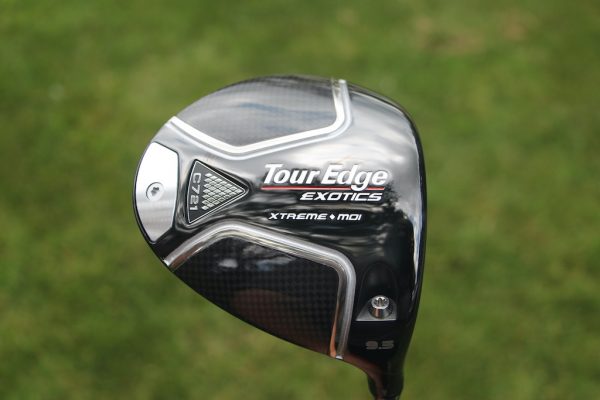
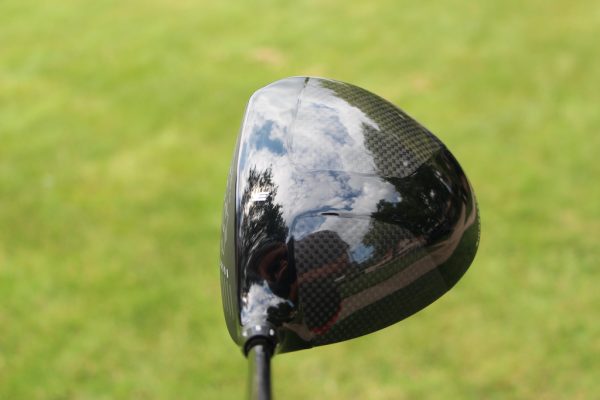
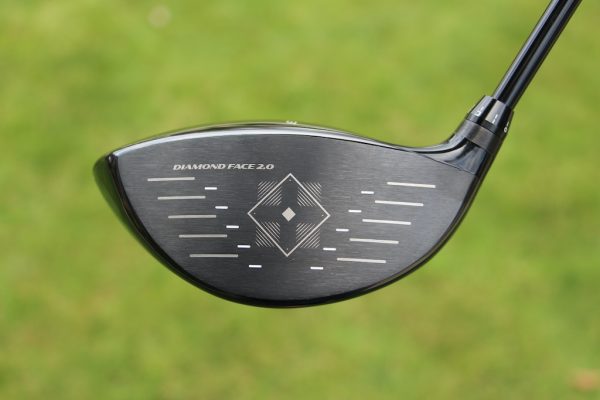
Getting the C721 out on the course is where you really start to appreciate all the technology that went into this driver. Well-struck shots are very long, very boring, and will hang with anything out on the market today. Center contact is rewarded with a long and very low spin shot that is just fun to hit.
The sound and feel are very solid, you can really feel the ball compress on the face as it leaves at high speed. The sound is more of a muted crack and much quieter than I anticipated. If you practice on an enclosed range your ears will thank you for your choice in drivers. Shots hit away from the center of the face retain a lot of ball speed and stay online really well.
My miss is low on the heel and those misses stayed in the air fairly well and went a good ways. Shots hit down on the heel or higher on the toe side still stay online really well due to the Ridgeback spine and rear weight. The C721 is just slightly higher than mid-launch for me, but the low spinning head never allowed my shots to balloon or rise even into the wind. I do wish the face was just a touch deeper as I had to play with my tee height in order to find the optimal setup. The better players will enjoy the neutral weighting and there seems to be very minimal draw built into the driver.
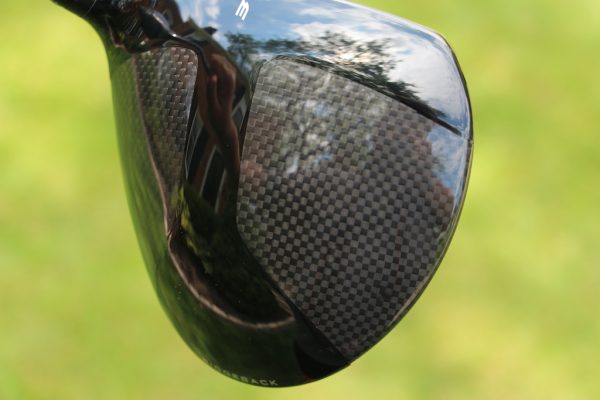
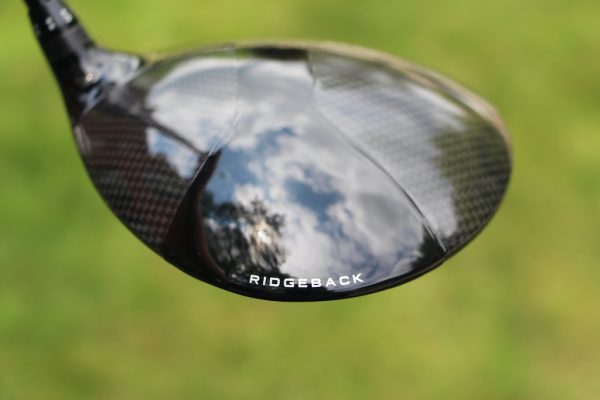
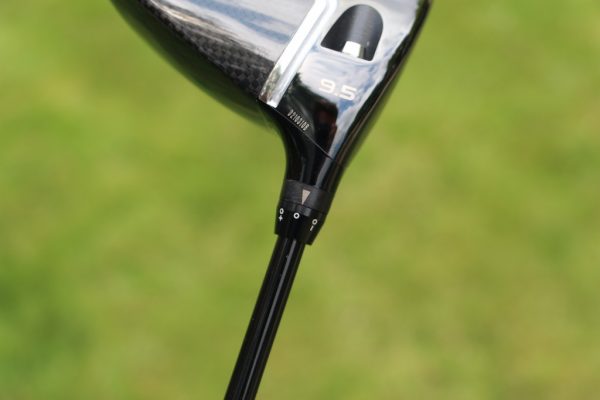
Overall, the Tour Edge Exotics C721 driver is a great club that will probably be overlooked by too many golfers. If you are looking for added distance, a lot of forgiveness and want to keep some money in your pocket, then you should seriously take a look at Tour Edge.
- LIKE103
- LEGIT12
- WOW6
- LOL2
- IDHT1
- FLOP1
- OB2
- SHANK5
Driver Reviews
Review: Ping’s G400 and G400 LST Drivers
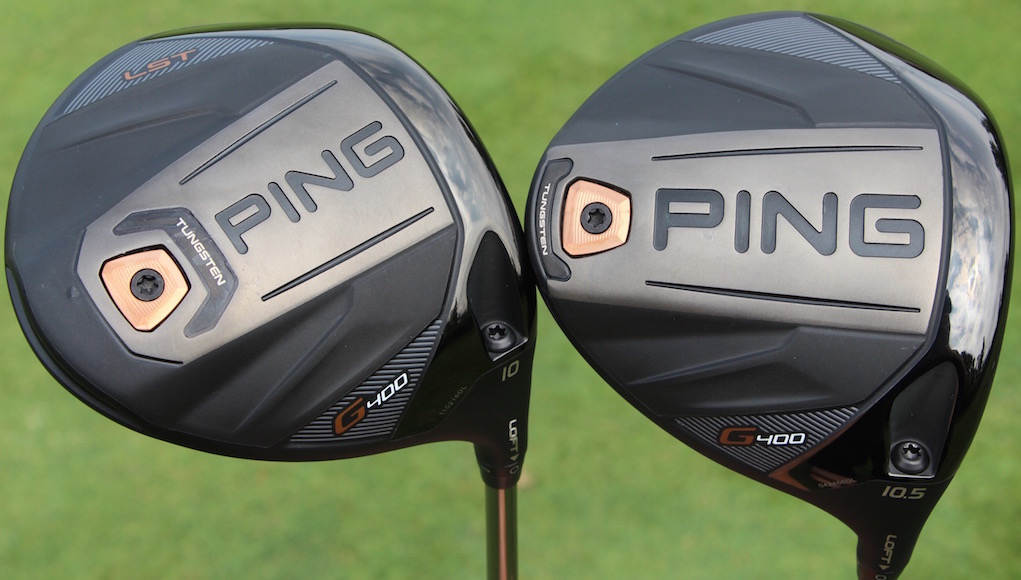
I still remember the first time I hit Ping’s G30 driver. It was July 2014, and I was at Ping’s HQ in Phoenix. Super low-spin drivers were all the rage at the time. With their forward center of gravity, they were helping golfers optimize their launch conditions beyond their wildest dreams: crazy high launch, ridiculously low spin. Many in the business, including myself, had one of these drivers and spent many launch monitor sessions trying to figure out how to get more distance from these high knuckleballs. The bad news was that forward-CG drivers, by nature, were really unforgiving. Bad shots were really short and crooked.
Before I knew the G30 was a big deal, Marty Jertson, Ping’s Director of Product Development, explained to me his vision for the perfect driver inside a conference room at Ping Headquarters. In his eyes, the perfect driver didn’t have the low, forward center of gravity (CG) that was being touted at the time. Its CG was located as low and as rearward in the driver head as possible, which he said would offer the best of both worlds: optimized launch conditions on good shots, as well as the best possible forgiveness on bad shots.
Building the perfect driver was a long way off (and still is), but Jertson was excited where Ping had landed with the G30. When it was released, the driver was a powerful testament to his vision. Its rear-CG design created great distance on good and bad shots, and it was also a very straight driver. The G30 sold incredibly well and, as a result, the industry mostly shifted away from forward-CG drivers.
It’s been nearly three years since the release of the G30, and Ping has just made another counterintuitive driver release. The company shrunk the size of its new G400 drivers in a climate where full-size drivers have become the norm. Granted, it’s only 15 cubic centimeters smaller, but it’s noticeable at address. Compared to the Ping G drivers they replace (which replaced the G30), the G400’s look like they cut carbs.
Despite their slimmer frames, however, the G400 drivers are actually more forgiving than the G drivers (which were even more forgiving than the G30). That’s why Ping representatives say smaller is actually better in the G400’s case. The drivers have the lowest, most rearward CG of any Ping drivers ever, and their smaller size is said to improve their aerodynamics so golfers can swing them fractionally faster. The other big change is a new face material made of T9S+ titanium, which is thinner and more flexible to help golfers generate more ball speed.
For this review, I wanted to put the G400 and G400 LST to the test against the G and the G LST drivers that they replace, so I took them to the Launch Pad at Carl’s Golfland in Bloomfield Hills, Mich. I hit five shots with each driver on Trackman IV, and to ensure as much of an apples-to-apples comparison as possible, I tested each driver head with the same shaft. Each driver head was adjusted to the same loft, or as close as possible.
Note: The G, G LST, and G400 drivers I tested were 10.5-degree heads adjusted to 9.5 degrees. The G400 LST had a loft of 10 degrees, and it was adjusted to 9.4 degrees.
The Test
In my personal driver tests, I don’t usually see a huge uptick in distance or accuracy when comparing the latest drivers to the most recent models from the same manufacturer. Improvements generally come in the form of improved head shaping, a better feel, or enhanced adjustability. That’s why I was surprised to see such a big change in my launch conditions and dispersion with the G400 drivers.
G400 Test Results: With the G400, I launched my drives an average of 1.6-degrees higher than I did with the G while dropping spin an average of 416 rpm. That led to a significant improvement in distance. With my swing speed and ball speed staying about the same, I added an average of 7.2 yards more carry distance and 8.7 yards more total distance.
G400 LST Test Results: First, a note about the G400 LST. It has a CG that’s slightly lower and more forward than the standard G400 driver to help golfers reduce spin. Like the G30 LST and G LST, it’s still very much a rear-CG driver, but its design helps high-speed golfers who can consistently find the center of the club face maximize distance without highjacking forgiveness. When I test Ping drivers, the LST is generally the model that creates the best performance, and the G400 LST was no exception. I saw an average of a 1.2-degree higher launch angle with all other things staying about the same when I compared it to the G LST. The result was an average of 6.6 yards more carry distance and 3.1 yards more total distance. It was the longest and straightest driver I hit in the test.
Note: Ping also sells a G400 SFT (Straight Flight Technology) driver, which has added draw bias. To learn more about it, click through to tech story on the G400, G400 LST and G400 SFT drivers.
Dispersion
One way to explain the improved launch conditions is that I hit the G400 drivers more consistently. As you can see in the Trackman dispersion chart, I hit the G400 and G400 LST drivers straighter on average than the G and G LST. Is that its slightly enhanced forgiveness shining through? Maybe, maybe not.
To me, the changes Ping made to the look and feel of the driver were just as important as the performance difference I saw on Trackman. I’ve always preferred smaller driver heads, or at least 460-cubic-centimeter drivers that appear smaller than their size. For that reason, I felt more confident with the G400 drivers in my hands. I didn’t mind that I didn’t see any added swing speed or ball speed from the smaller driver head. I was sold on the looks alone.
- At Address: Ping’s G400 (left) and G drivers.
- At Address: Ping’s G400 (left) and G drivers.
I also preferred the sound of the G400 drivers to the G drivers. There was definitely much more of a “thwack” than a “ping” at impact, which made the G400’s feel more powerful. Looks and feel are subjective, of course, but to me the improvement was night and day. I don’t think it’s a stretch to say that my fondness for the looks and feel of the G400 was at least a contributing factor to my improved performance in the test, if not the most important factor. When I like the way a club look at address, I tend to hit it better, and I know I’m not alone.
I do want readers to keep in mind that this was a one-person test and I hit a limited amount of balls. Yes, it’s a great indication that the G400 driver can be measurably better than a G driver, but it’s not a guarantee.
I also want to address the weaknesses of the G400 drivers. While they’re few, they could push golfers into another driver model in a fitting. Unlike Callaway’s GBB Epic, TaylorMade’s M1 or Titleist’s 917 drivers, the G400’s don’t have CG adjustability. That means there’s no way to fine tune ball flight outside of a shaft or loft adjustment. A bigger deal for some golfers might be the G400 crowns. Despite their smaller size, there’s still a lot to look at address, as was the case with the G drivers.
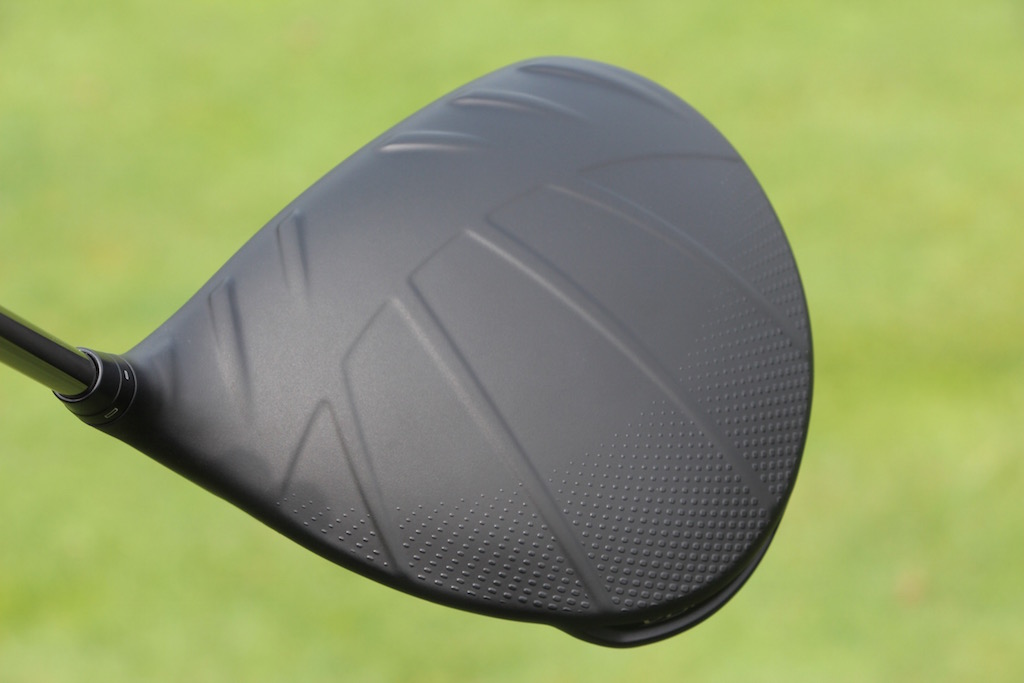
Aerodynamic features on the front of the crowns, “Turbulators,” have been thickened for the G400 release. There’s also Ping’s “DragonFly Technology,” a geometry on the back of the driver crowns that helps push CG lower and more rearward in the driver heads. I personally think the G400 crowns give the drivers an old-school, muscle car-like look, but there’s no question they won’t fly with all golfers.
Whatever your thoughts about what’s on top of the G400 drivers, there’s no question that what’s under the hood can offer something the G and G30 drivers did not. Maybe you’ll like the smaller head. Maybe you’ll prefer the quieter sound. Maybe the improved forgiveness will show up on a launch monitor or on the course. Or maybe you’ll just flat out rip a G400 farther and straighter down the middle like I did.
If that last bit happens, try not to second-guess it.
- LIKE677
- LEGIT83
- WOW48
- LOL18
- IDHT12
- FLOP22
- OB15
- SHANK59
Driver Reviews
Members Choice: The Best Driver of 2017
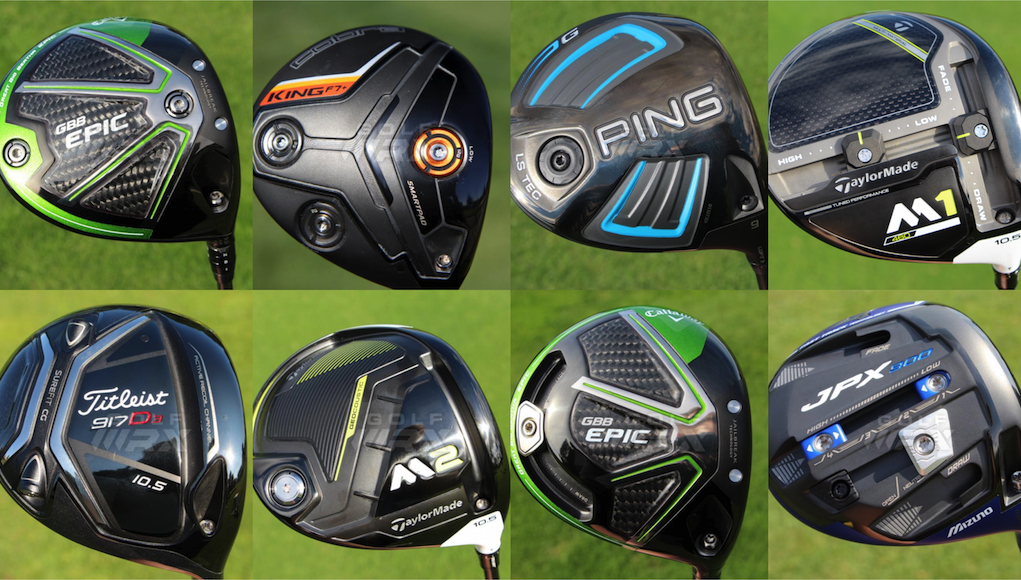
What determines the best driver on the market; is it the opinion of professional club fitters, professional golfers or testing results from a group of amateurs?
At GolfWRX, we believe all three sources can lead golfers to an answer. Being a website founded by passionate golfers with a mission to serve passionate golfers, though, we place a special emphasis on the opinions of our GolfWRX Members — the most knowledgeable group of golfers on the planet. No other group of golfers in the world tests golf clubs as frequently or as extensively as GolfWRX Members. So who better to poll to get an initial indication of the best performing drivers so far in 2017?
So we asked them, “What’s the best driver of 2017?” They voted for the three drivers they felt most worthy of the title and provided feedback about their selections in our special forum thread. You can see the results below (as of the first three weeks of voting), as well as quotes we pulled from GolfWRX Members about the drivers from our forum.
Remember that our polls will remain open for voting throughout the year, and we’re going to keep an eye on the percentages as more and more golfers have an opportunity to test these drivers. We’re also working on another Best Driver list, which will evaluate clubs in another important way. Stay tuned!
Keep in mind that there’s no single driver on the market that is the absolute best option for every golfer: that’s why nearly every manufacturer makes at least two different models. As this list indicates, however, some drivers are working better than others this year. Happy Testing!
Note: Forum posts were minimally edited for grammar, style, spelling and clarity.
Cobra King LTD Black (3.00 percent of votes)
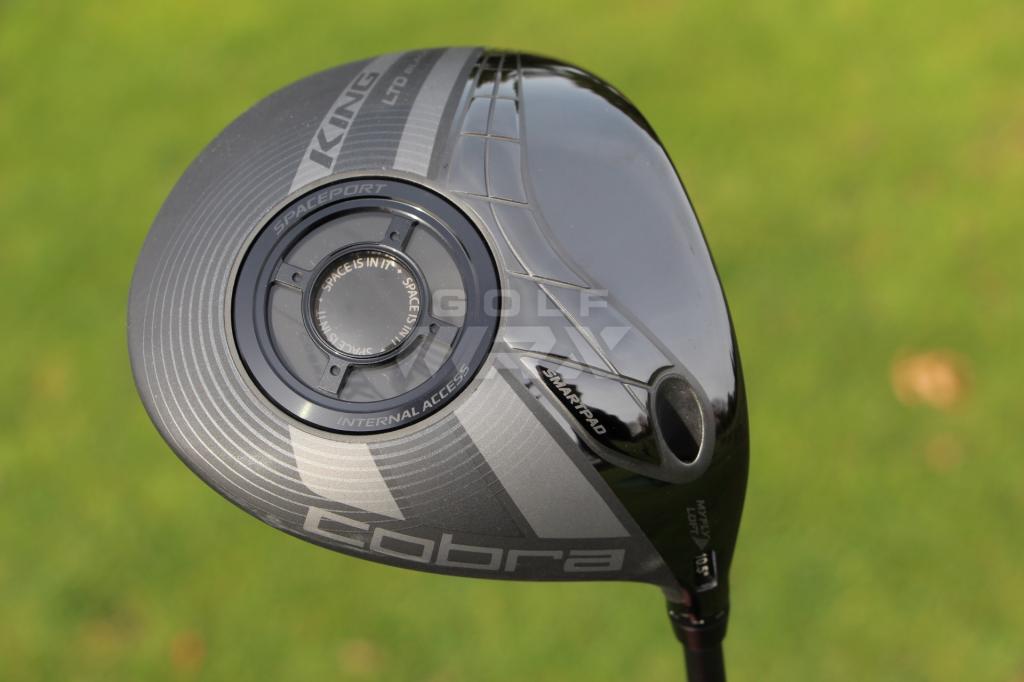
- The General: All-black LTD is really clean looking. I’m about to cover up the orange on my LTD with lead tape. Orange is played out
- mh7vw: Love my LTD, but wish the black finish (or even this gray) didn’t have that subtle checkering you see in some like. Prefer plain black.
- dbleag: I am a fan of the black/orange combo. The performance and sound of the LTD is very appealing to me. I also like that the standard length is 45 inches. For me, that helps it be super-accurate. With the low-spin design, I hit it longest of the current offerings and can’t remember the last time I missed a fairway. Straight, solid, low spin and nice.
Further Reading
Mizuno JPX-900 (3.20 percent)
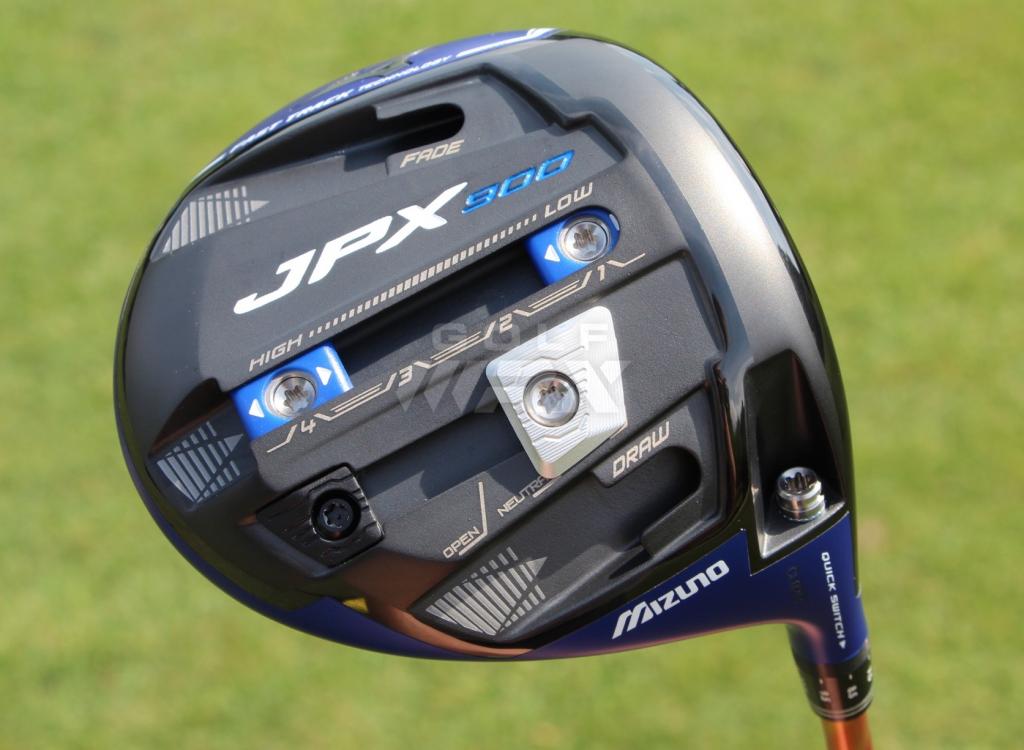
- johnnythunders: JPX goes straight. Best real-deal shaft and is long and very adjustable.
- KT35: That blue head looks awesome sitting on the ground. I hit balls off the toe and heel and didn’t see the big drop off in distance like the previous models.
- nmorton: The JPX-900 is definitely more forgiving compared to the JPX-850, and sounds much better. Though they did sacrifice a bit by going with a little larger profile, but it’s easy to get used to. The graphics are so so, but this driver performs. I’m really digging the Evo II (shaft).
- jay65: I can see that Mizuno is really making a decent effort with its drivers/fairways in terms of tech and aesthetics, and they compliment the new JPX-900 line of irons really well, but if they’re going to make any inroads they really have to address this issue of their custom shafts options. It’s rubbish.
- bok006: The JPX-900, after being properly adjusted by the fitter, gave me an extra 20 yards just like that. My swing speed suggested I was borderline S to X (flex), but the fitter said unless I was fighting a hook I should stick with the S.
- bubbagump: …the JPX-900, when properly fit, is just as long on a consistent basis than all the new models I tried in real life situations. It looks great, sounds solid and just knows the way to keep the ball in play.
- Chazb: I’m 69 years old, have a swing speed of 91 mph and played nine with the JPX-900 this morning. It was in the 40s with a brisk wind hit it around 220 to 230 yards. It was a fairway finder, has great feel and is one of the easiest to control drivers I have ever hit. I can’t wait ’til it is warmer and can dial it in more. So far I have the two weights all the way forward for a lower flight and the other set with a draw bias with 10.5 degrees of loft. This driver is the real deal; it may not be the longest or the shortest, but it is a fairway finder which IMO makes it a winner.
Further Reading
Ping G (3.80 percent)
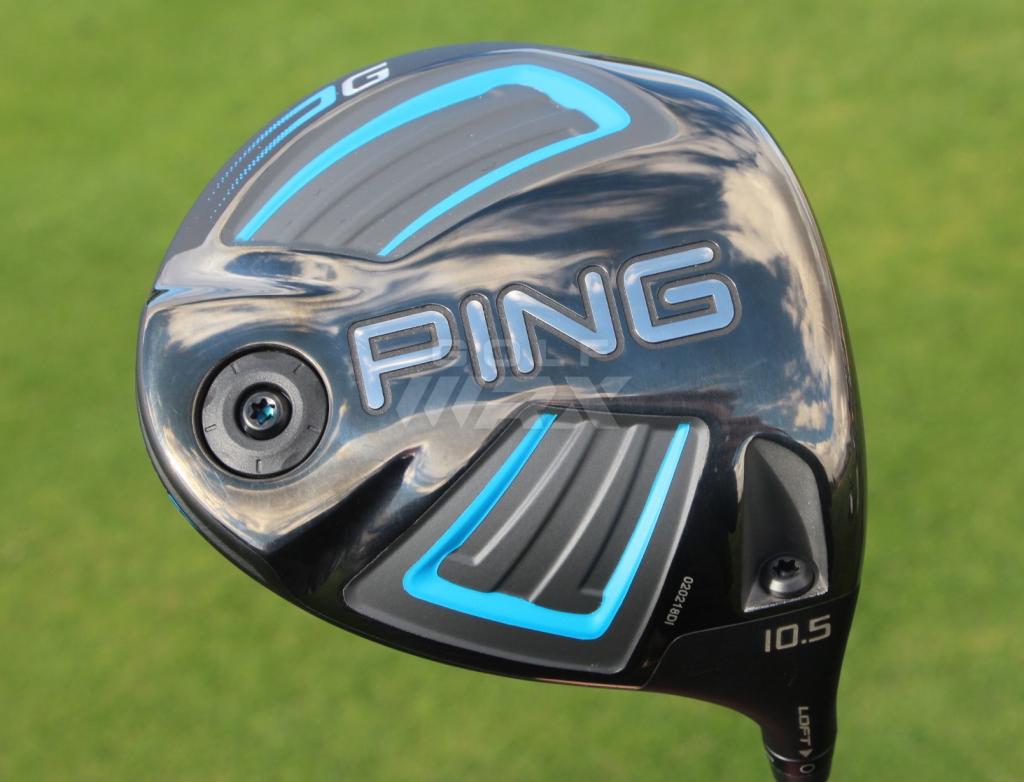
- Wesquire: Ping G is the most forgiving so it wins.
- bopper53: Ping G hands down. Great distance and the most forgiving.
- Dannydubbbs: The Ping G series is just too forgiving. The distance is comparable between most models, but Ping always seems to win out with forgiveness.
- Bruin Bear: The Ping G is going to be overlooked because it’s looked at as “game improvement,” but this driver is a beast. I liked the LS, but it requires a faster swing to get results and in the cold outdoors I just don’t have that all the time. I think the G is the perfect blend of performance and forgiveness.
- cmrl1986: Only reason I switched from the Ping G25 was that the G felt less harsh off the face. Same distance just about.
Further Reading
Cobra King F7+ (3.90 percent)
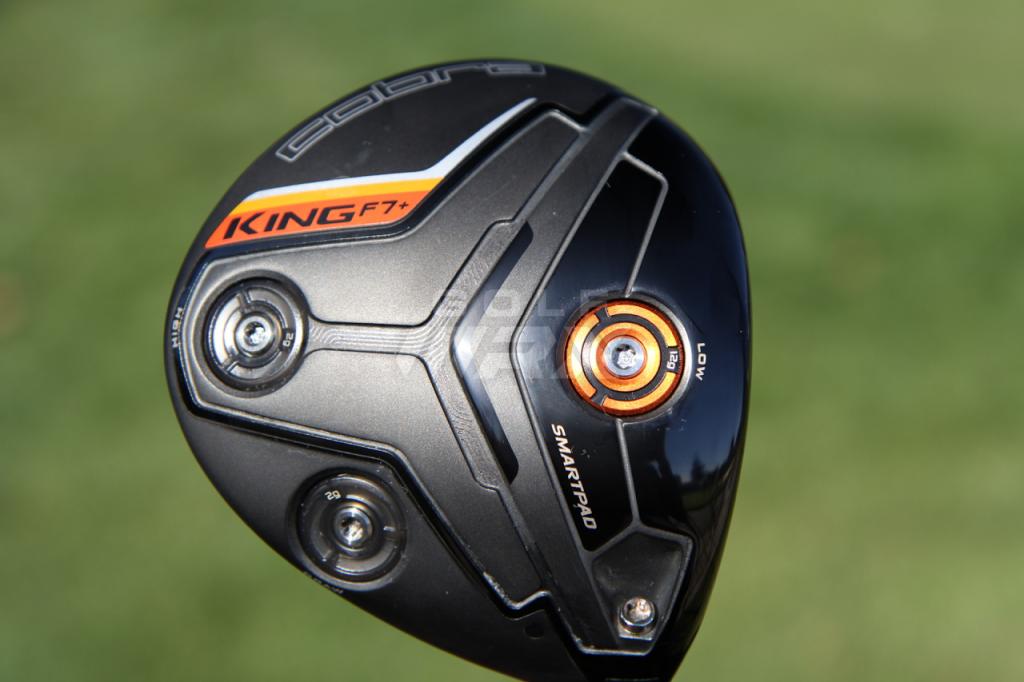
- EntourageLife: Ball really flies off face. Driver head controls spin well. Not one drive “ballooned” and trajectory was high and best of all… very easy to work ball right to left for a confident draw.
- Gollie: The F7+ is another great offering from Cobra… I didn’t get the “MAN, this is gonna take my LTD out of the bag” feeling, but it has very good sound, feel and performance.
- J13: F7+ is a great offering from Cobra and IMO is in the top-3 drivers this year. Epic is the standout for me numbers wise, then M series and F7+ are right behind it. Love the Agera (shaft) in there!!! Such a great shaft; I can’t seem to get mine out of the bag.
- Golfer from MO: Hit both Cobras lefty and as a lefty the LTD is the shizzle. Last year it was the LTD and Big Bertha down to the absolute wire… the F7+ is more workable than the LTD, but not longer and a little worse on mishits.
- Boognish: I took a few swings with the F7+ at Golf Galaxy yesterday. 9.5 degrees with heaviest weight forward. The stock shaft is actually the same model I play in my GBB (albeit in smoked black instead of yellow). Ball flight and distance were similar to my GBB with good consistent sub-3000 backspin. Sound was OK, feel was harder than the GBB.
- thechief16: Just from the range (no LM), I didn’t see a noticeable performance improvement with the F7+ over the original King LTD. And I like the look and sound/feel of the LTD better.
Further Reading
Ping G LS Tec (4.90 percent)
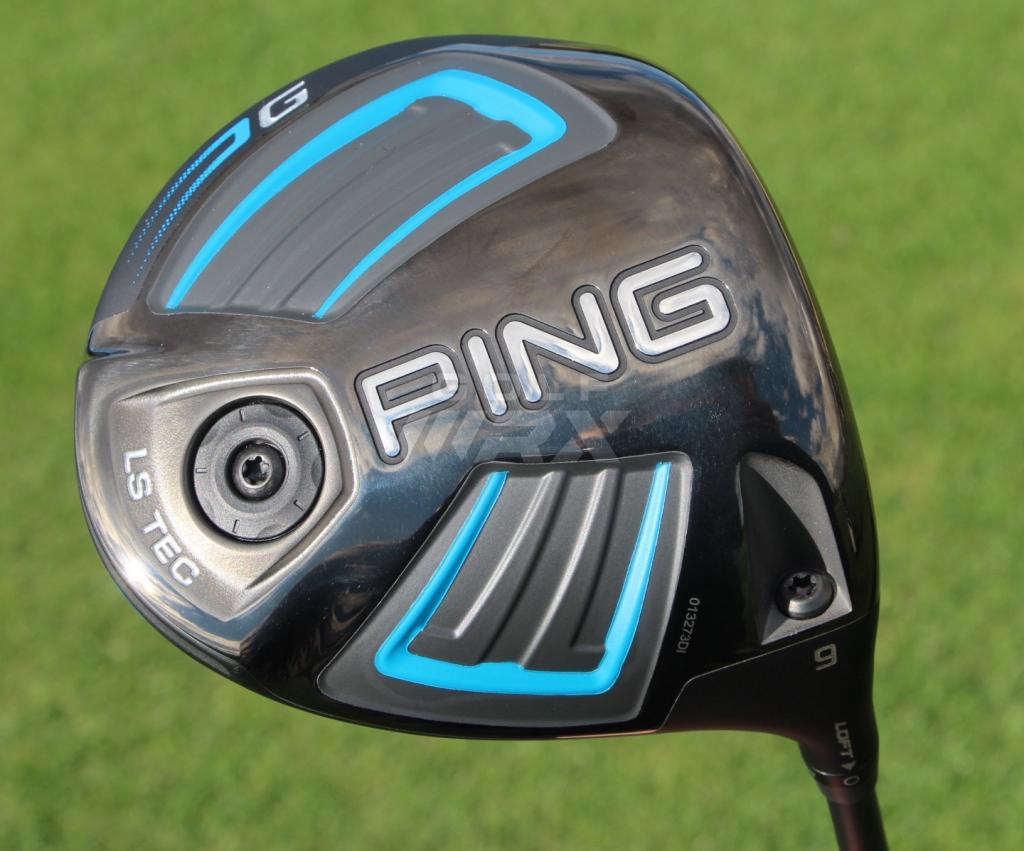
- drvrwdge: I played the G LS with the Ping Tour 65X (shaft) tipped an inch for about a year. Just put the HZRDUS Yellow 75 6.5 tipped an inch and never thought it was possible, but it’s longer and straighter. Best driver shaft combo I’ve ever hit. You can feel that HZRDUS throughout the entire swing. Really gives you a solid connected feel.
- Mtngolfer1: I am not sure that I would consider this a 2017 Driver, but my vote went to the Ping G LS Tec. The fact that my G is still holding its own against the latest 2017 releases has me very excited to see what Ping will release later this year.
- 3woodvt: Fairway finder and plenty long.
- pitchinwedge: I’ve found the LS to be nearly as fade biased as the M family. I get pretty good results with the LS by making a conscious effort to make more of an in-to-out swing. Any lapse in concentration and everything goes right. The M’s require even more effort, which is the reason I stayed with the LS instead.
- 3 Jack Par: After an up and down year with the G LS, I’ve actually recently gone back to my G30 LS head. I only have a couple of rounds as a sample so far, so I can’t really draw a conclusion about whether one or the other is better, but with the same shaft it seems like my G30 head might be a little longer. Honestly, the performance differences are pretty minimal if you really compare the two generations.
Further Reading
Titleist 917D3 (5.30 percent)
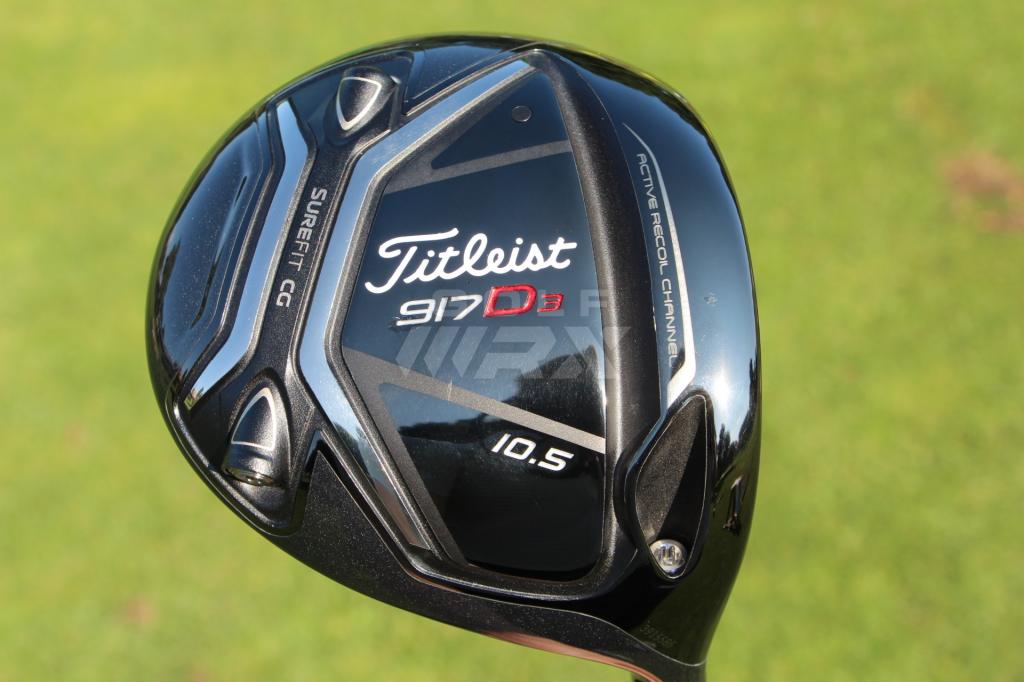
- Gava: The 917D3 is in my bag now, and I’ve found it incredibly long with a recently purchased Graphite Design Tour AD MJ 7TX shaft. Feel and accuracy has been a real improvement as well.
- Togatown22: I find my 917D3 to be just as forgiving as my 915D2 was, and man do I prefer looking down at the head shape and color versus the 915. Very confidence inspiring.
- NIxhex524: I would definitely give the D3 a whirl. I feel like Titleist has made great strides at making the smaller head way more hittable for us ams.
- KPH808: So in conclusion, I was hitting the ball about 9 yards further on average and 3-4 mph faster ball speeds with the 917D3 vs. the 915 D4. The biggest thing for me was the forgiveness between the two; the 917D3 was more forgiving on mishits.
- brushie: The 917D3 head feels soft like the 910 and sounds great. I never had an issue with the 915 sound; it wasn’t great, but it didn’t bother me too much. This is much better, though. The 917D3 head shape is perfect to my eye as well. The area where the 917 shines is forgiveness.
Further Reading
TaylorMade M1 440 (5.35 percent)
- Tigermatt31: The M1 440 is best driver I’ve had ever.
- TollBros: The M1 440 is definitely lower spin than the M1 460 or M2 from last year. Launch angle isn’t really any lower, but spin is lower for sure.
- specimania: This year’s 440 is more forgiving.
- MCoz: Yes, this 440 is more forgiving, and yet it also appears to be more workable than both of the previous M1 and M2s.
- nitram: To save you a bunch of reading and crunching numbers, I quickly concluded there was a little more forgiveness and exactly +0.4 mph ball speed with the 440. By forgiveness I simply mean this: A 1.48 smash 440 will give you the same ball speed and distance as a 1.49/1.50 430. But if you get a 1.50 from both there is no measurable gain. Side-to-side dispersion was better by 4.7 feet with the 440. Workability was a wash between them, although the 430 seems a bit more fade biased whereas I’ll describe the 440 as a scosche more neutral.
- tj24: I hit the M1 440 with my Aldila RIP at an 80-gram X-flex. For me, the spin numbers were around 1700 rpm which is probably to low for my swing. I did, however, like the shape of the head and I felt like I could easily work the ball both ways.
- halfsumo: I really think they nailed it with the shape of this 440 head. Nice pear shape, no weird bulges or ridges that you have to get used to.
Further Reading
- GolfWRX members gain 7 yards on average with 2017 TaylorMade M1, M2 drivers
- 12 Important Changes to the 2017 TaylorMade M1, M2 Drivers
Titleist 917D2 (6.65 percent)
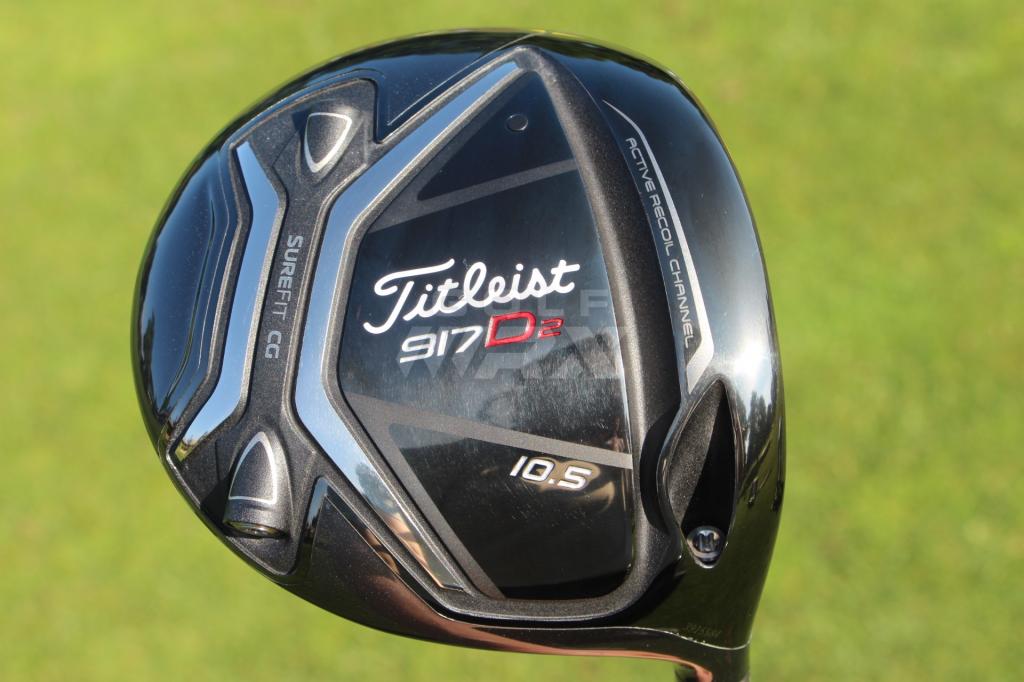
- tsletten: Love the sound of the 917D2.
- bladehunter: No doubt the 917D2 is an accurate, forgiving driver that doesn’t look as big as it is and sounds fantastic.
- JStang: Maybe it’s just me, but I find the face to be more shallow (top to bottom) with the 917D2 than other drivers that I’ve tried lately.
- LuckyLowbrow: I was actually spinning it too low with the D4. Going up to the D2 normalized my spin rate, but led to such an improvement in consistency across the face.
Further Reading
TaylorMade M1 460 2017 (11.81 percent)
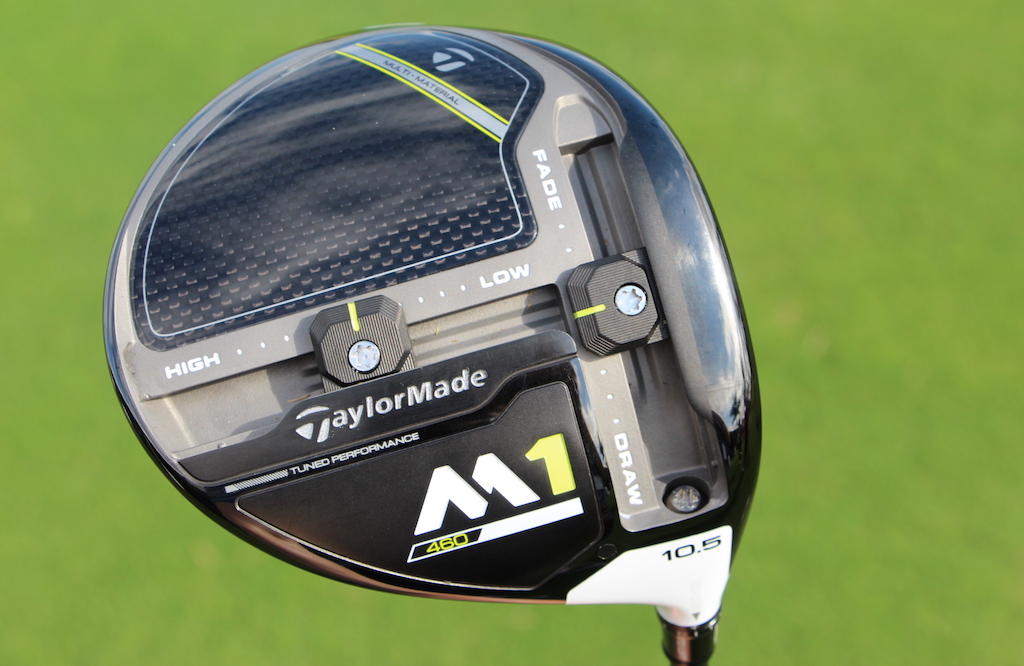
- Ereim: I ended up going with the M1 460. It gave me a slightly tighter dispersion, and I liked looking down at it slightly more.
- jdenham15: The 2017 TaylorMade M1 is a great driver, but I tend to miss wide right and struggled to turn it over.
- ZBigStick: The M1 460 gave me the best results. Was able to increase launch without much added spin with the (T-Track) weight. Feel is good and felt forgiving; dispersion results backing that up.
- BillMurrayGolfing: The face is hot, receptive, thin and makes a nice sound. I like that.
- JStang: Sound and feel were both fantastic. I couldn’t ask for much more in the sound and feel department than what this club offers. Plenty of feedback was provided based on impact as I would expect. I could easily tell where I missed based on feel.
- tnord: Just as another tester found, moving the weight back and forward absolutely does impact how the club sounds. I’m much more a fan of the weight back.
- chickenpotpie: Moving the slider to the draw position made the feel of the driver a little harsher. Feel was much much smoother with that weight in the middle. I didn’t see any such changes with the front/rear slider.
Further Reading
- GolfWRX members gain 7 yards on average with 2017 TaylorMade M1, M2 drivers
- 12 Important Changes to the 2017 TaylorMade M1, M2 Drivers
TaylorMade M2 2017 (11.86 percent)
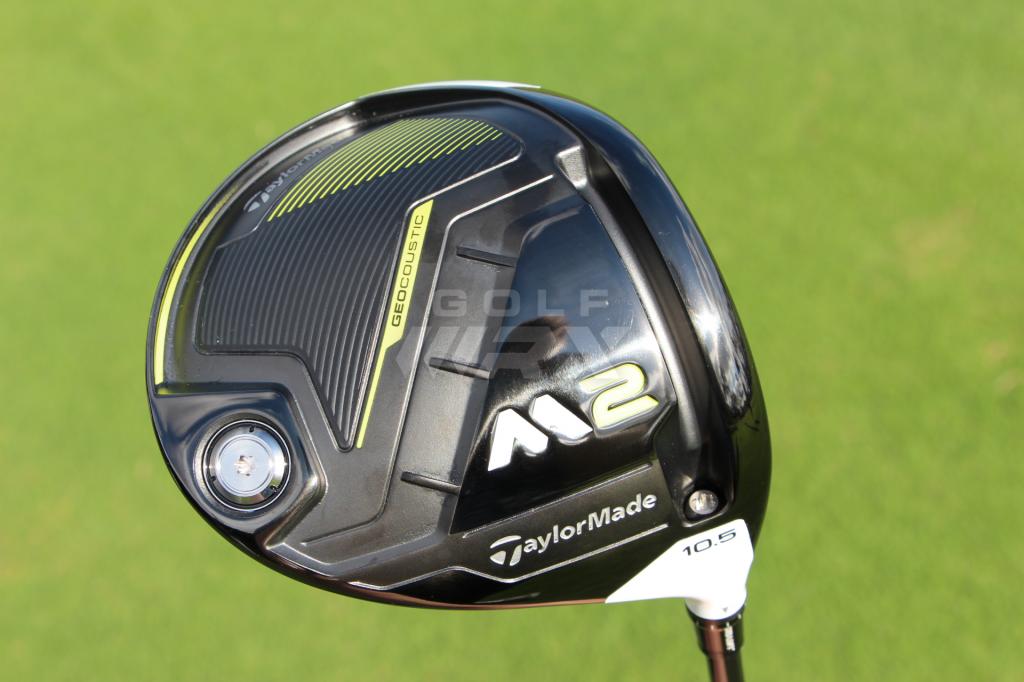
- ZBigStick: I liked the feel of the new M2 but seemed to get better results and numbers with the new M1. Could be the extra 5 grams of head weight?
It was dynamite with the GD TP-6 (shaft)! - erock9174: On Trackman it didn’t put up the most ball speed, but counting all shots the M2 had the longest average distance.
- gripandrip: The M2 seems to have a little bit of a fade bias for me. And the head is HUGE. Maybe it’s a mental thing to be able to turnover a head that large.
- Bomber_11: M2 has very big shoes to fill, as the 2016 M2 was arguably one of the best drivers of the last 3-4 years.
- LONG&STR8: It’s hard to ignore the sound of the new M2. That may be TaylorMade’s biggest fail with that driver, as the sound and feel was one of the best things about the first version that I’ll have in the bag until something better comes along.
- Z1ggy16: The new M2 was terrible for me, not sure why. Unsure if it was the shaft I used but it spun up like a monster and ball speeds weren’t any better than previous M2.
- Peanut191: I don’t really think that the new M2 was much of a step backward, probably more that it doesn’t seem like a big step forward compared to last year’s model. I was hitting my 2016 M2 against a 2017 M2 indoors (which usually amplifies the louder, more obnoxious sound) and I didn’t notice that much of a difference in sound. It could have been that I might have just happened to get a hold of a head that was more muted than normal with the new one, but I just didn’t notice much difference. Performance wise, I could tell that the 2017 was slightly more forgiving than the 2016 model, but I was basically getting the same ball speed and spin numbers, so I didn’t see the need to upgrade.
- gioguy21: Played 54 holes this weekend. The M2 was as reliable as it could get. I hit 11/12 fairways Friday, 10/12 Saturday and 5/9 or so yesterday (windy). Controllable, just wants to go straight. The sound no longer bothers me. I think it’s when hitting indoors or in range bays that it gets unbearably loud. Makes a different sound when hit on the screws I’ve found, similar to last years M2/M1 with less high-pitched ring. The forgiveness is very obvious, as I hit a couple that were close to center of the face but either high or little out toward the toe that flew similar trajectory and distance to how a well struck shot would react. I think where this driver really shines is the ability to either tee it high and hit it with higher trajectory or the ability to hit it lower with a low tee (3/4 of the ball under the crown) and hit laser beams that don’t move left or right.
- G-Bone: From what I’ve seen on Trackman, 2017 M1 was a big jump from 2016; however, 2016 M2 was so good, 2017 is a minor jump.
Further Reading
- GolfWRX members gain 7 yards on average with 2017 TaylorMade M1, M2 drivers
- 12 Important Changes to the 2017 TaylorMade M1, M2 Drivers
Callaway GBB Epic (14.91 percent)
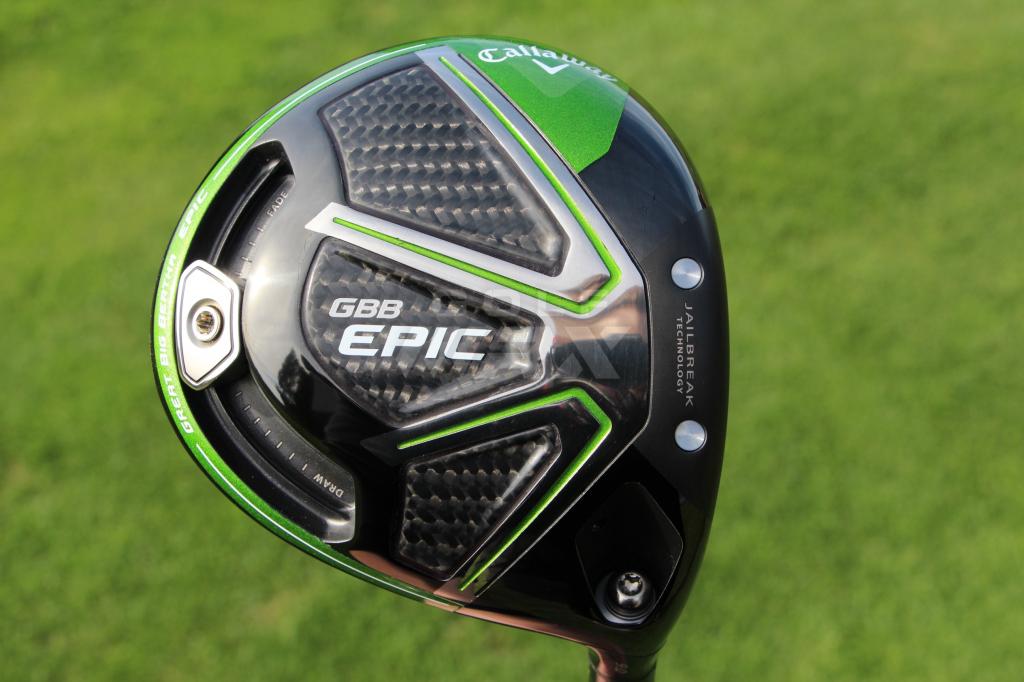
- HDTVMAN: I hit both the Callaway Big Bertha Fusion and Epic with a 44.5-inch UST Recoil F3 shaft and the results were very close. From customer testing, it appears the Epic is longer for those with higher (95+) swing speeds. I have also seen that 44.25-44.5-inch lengths promote tighter dispersion with customers, no loss of distance and better over-all drives.
- mbbrewer: Tried them all and for me Epic was the one. Fastest ball speed, lowest spin and tightest dispersion.
- Ereim: Epic felt great, looked great and the numbers were basically 99.9 percent optimized for my swing.
- johnnylongballz72: There is Epic and there is the M series… then there is everyone else. The votes here show it, the PGA Tour use shows it and launch monitors everywhere show it.
- misplacedtexan83: GBB Epic/Sub Zero pushed the envelop in design and materials to produce increased ball speed and gains. For once a driver did what a company said it would do.
Further Reading
Callaway GBB Epic Sub Zero (16.91 percent)
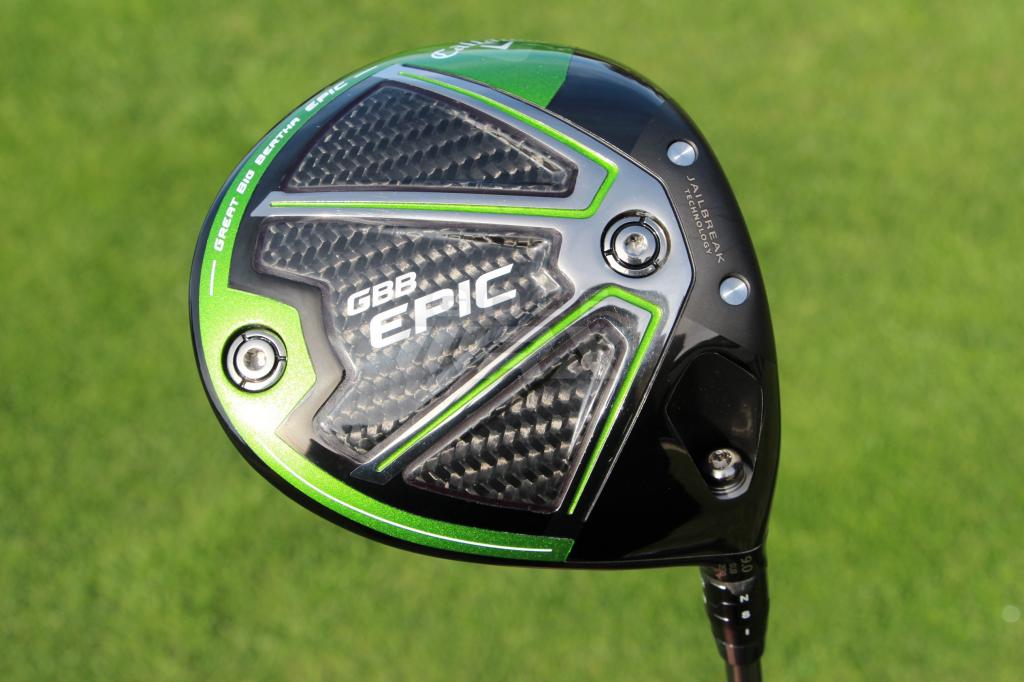
- jdenham15: I tested the Epic Sub Zero and Epic against my 2016 TaylorMade M1 and the ball speed was 5 mph higher on average, which gave me about 10 yards more carry disstance. That was great, but the part that sold me was the forgiveness. I love my Epic Sub Zero. I feel like it’s easier to turn over and I can work it both ways.
- Z1ggy16: Sub Zero was hands down the best, including my gaming M1 (yeah, not even top-3) due to the combination of lower spin, good forgiveness and feel and looks.
- jimhaire: I had a 2016 M2 and went with the Epic Sub Zero. The look at address suited my eye and the feel off the face was better for me. And the club went straight.
- Sef: I have tested a lot of these drivers and for me the Epic Sub Zero was so much better than everything else. I wish I could just apply all three votes to it.
Further Reading
Members Choice 2017
- LIKE652
- LEGIT92
- WOW45
- LOL39
- IDHT16
- FLOP39
- OB34
- SHANK255
-

 19th Hole2 weeks ago
19th Hole2 weeks agoDave Portnoy places monstrous outright bet for the 2024 Masters
-

 19th Hole2 weeks ago
19th Hole2 weeks agoTiger Woods arrives at 2024 Masters equipped with a putter that may surprise you
-

 19th Hole24 hours ago
19th Hole24 hours ago‘Absolutely crazy’ – Major champ lays into Patrick Cantlay over his decision on final hole of RBC Heritage
-

 19th Hole3 weeks ago
19th Hole3 weeks agoReport: Tiger Woods has ‘eliminated sex’ in preparation for the 2024 Masters
-

 19th Hole1 week ago
19th Hole1 week agoTwo star names reportedly blanked Jon Rahm all week at the Masters
-

 19th Hole1 week ago
19th Hole1 week agoReport: LIV Golf identifies latest star name they hope to sign to breakaway tour
-

 19th Hole1 week ago
19th Hole1 week agoNeal Shipley presser ends in awkward fashion after reporter claims Tiger handed him note on 8th fairway
-

 19th Hole6 days ago
19th Hole6 days agoBrandel Chamblee has ‘no doubt’ who started the McIlroy/LIV rumor and why


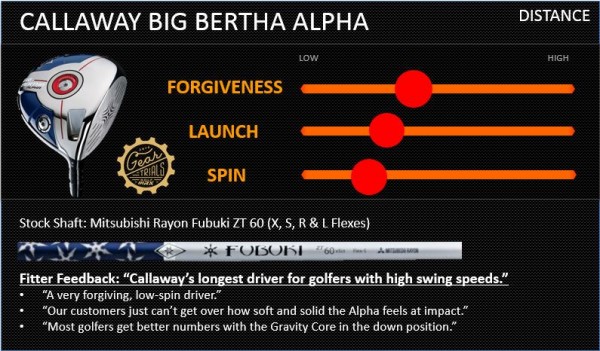
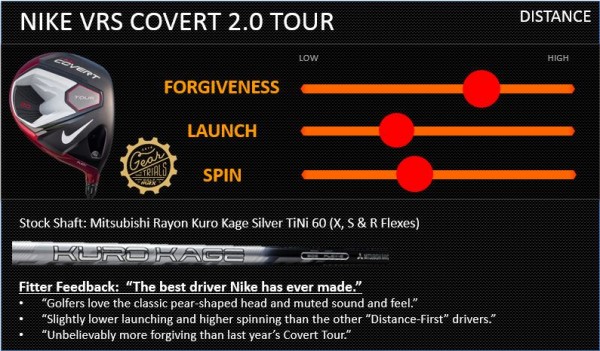
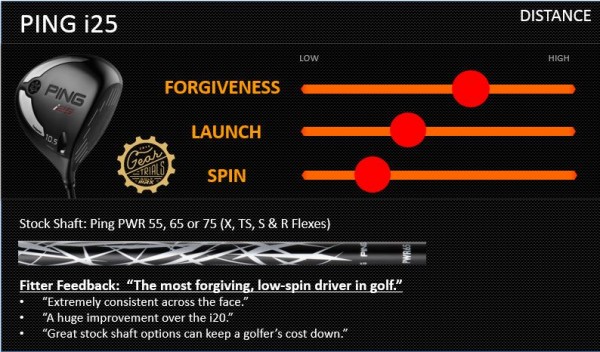

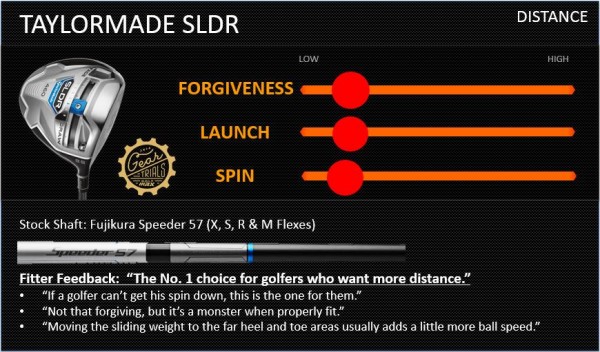

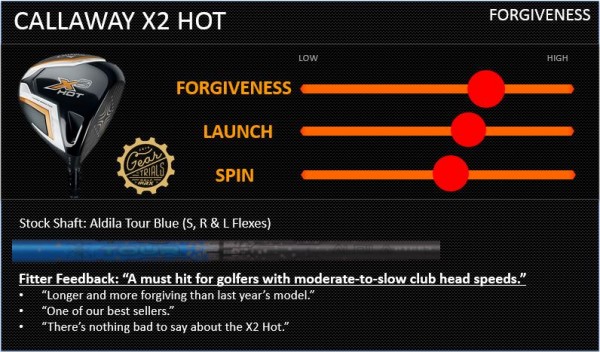
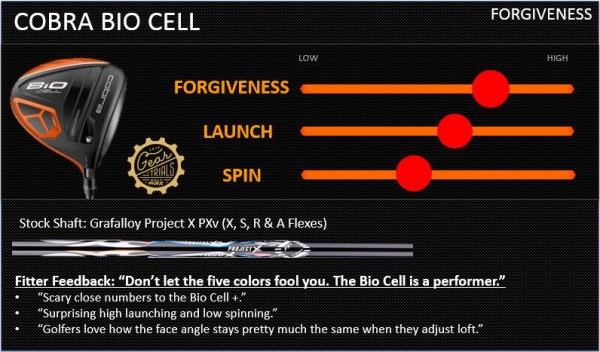
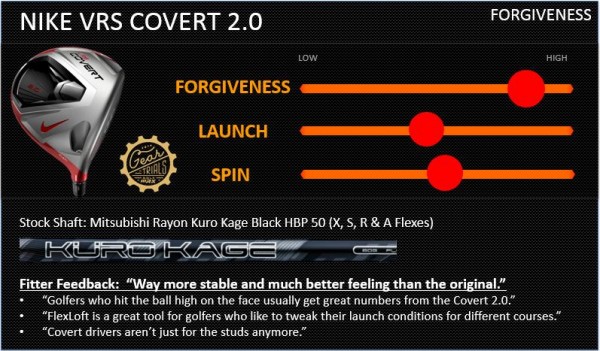
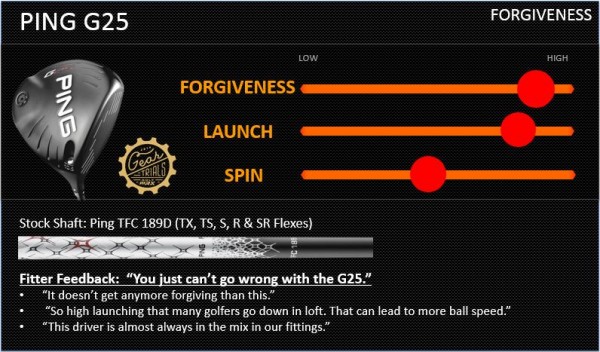
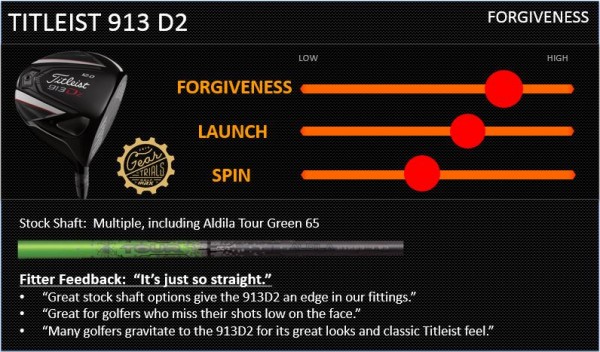

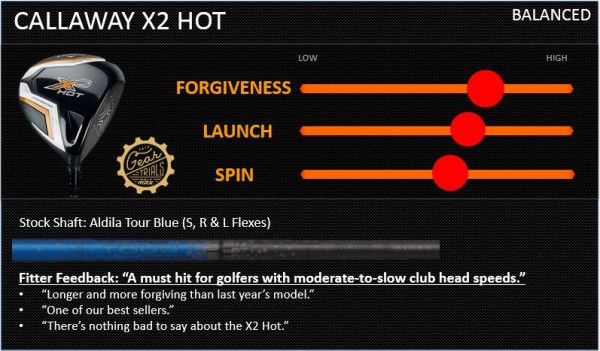
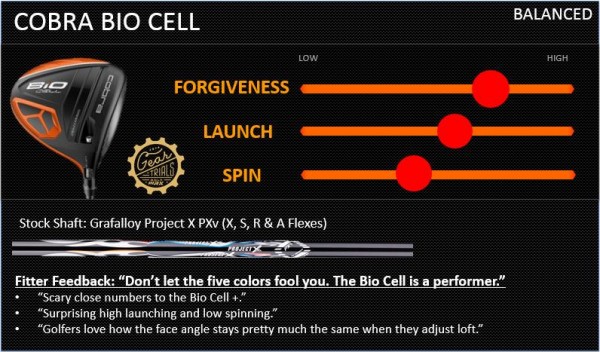
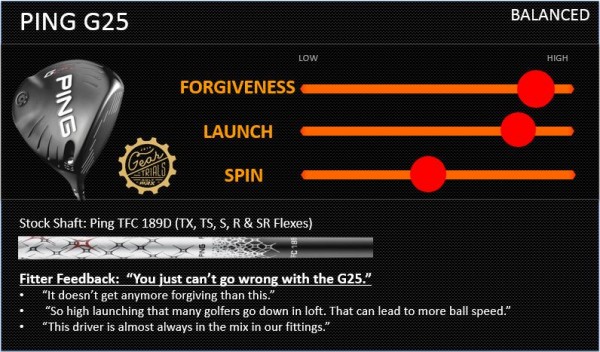
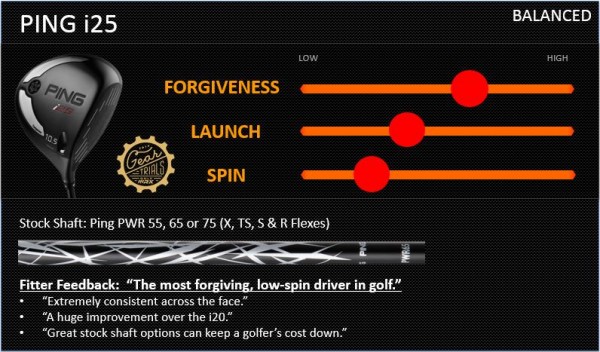
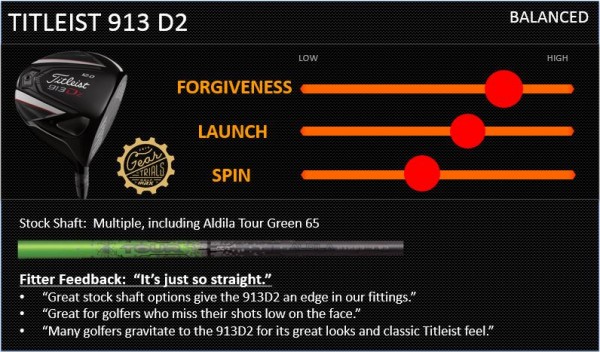


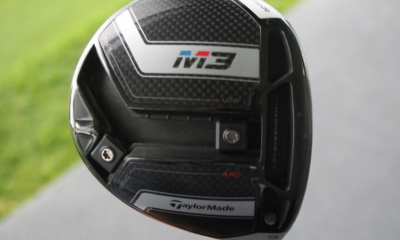





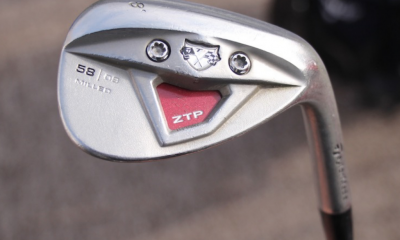

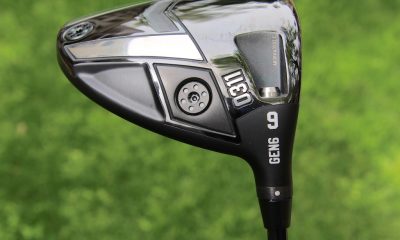

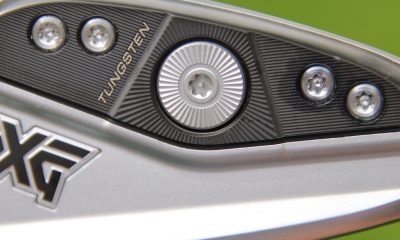

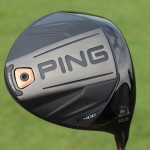
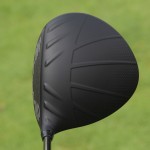
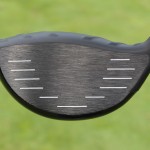
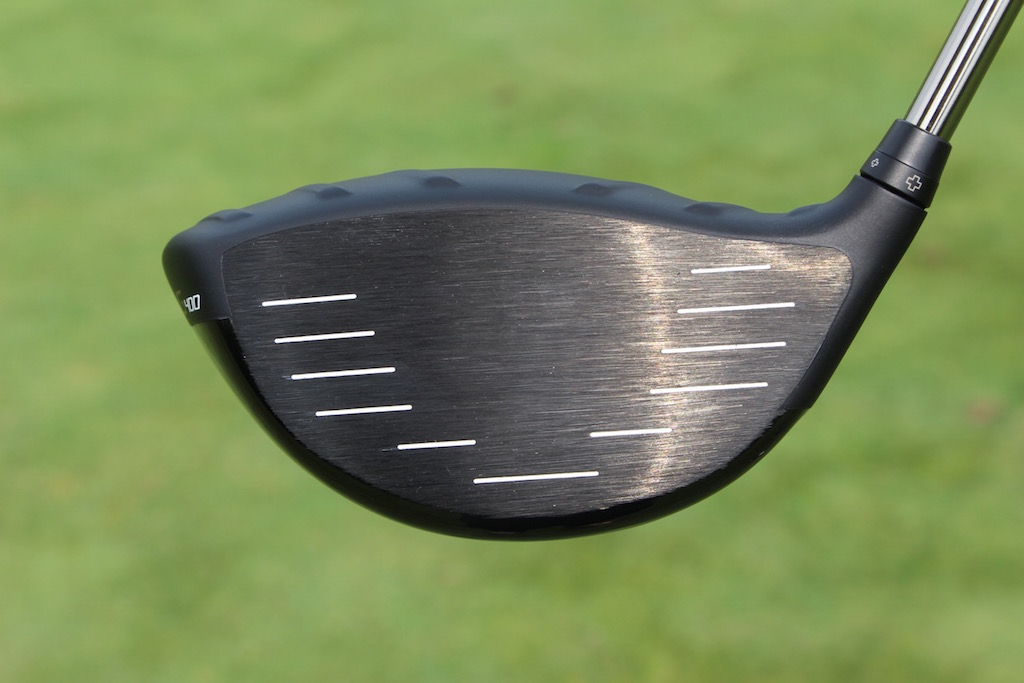
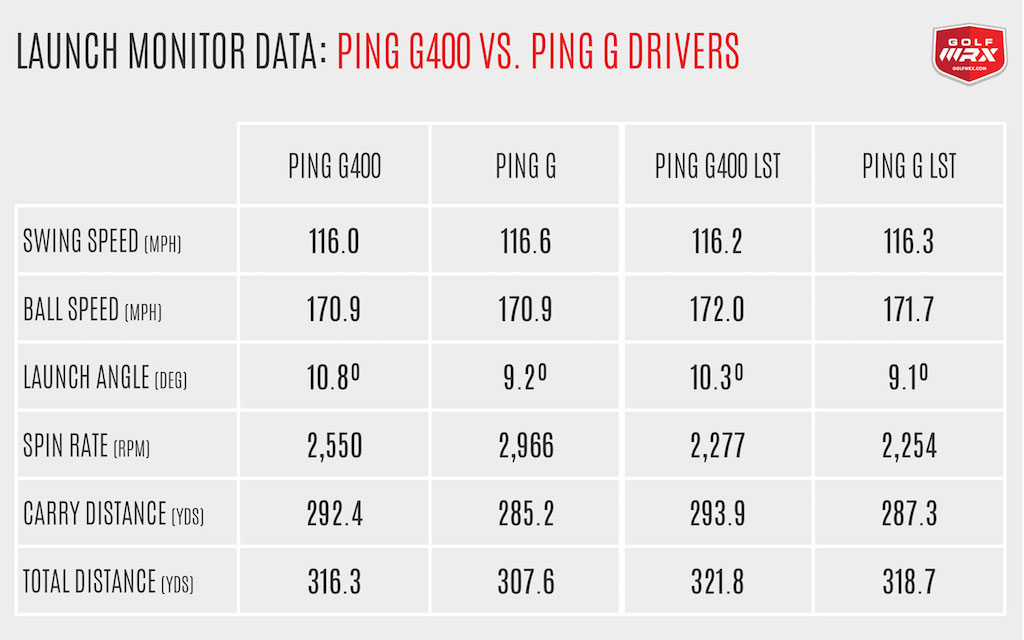
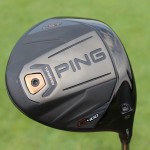
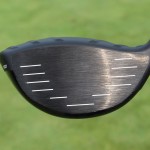
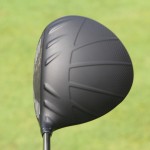
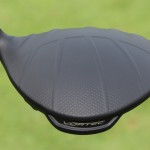
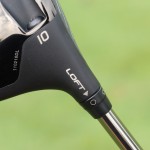
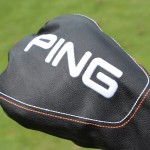
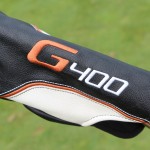
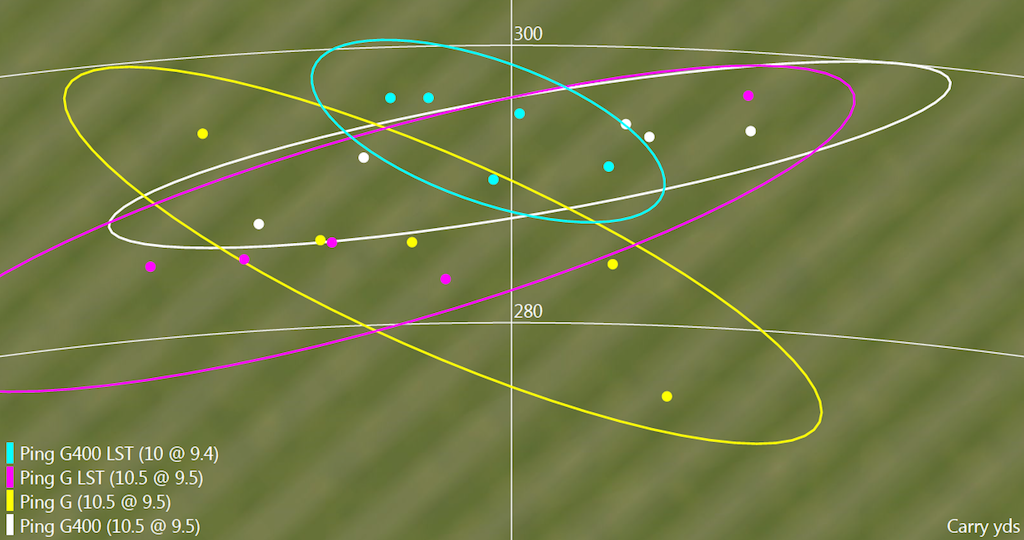
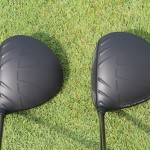
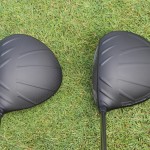
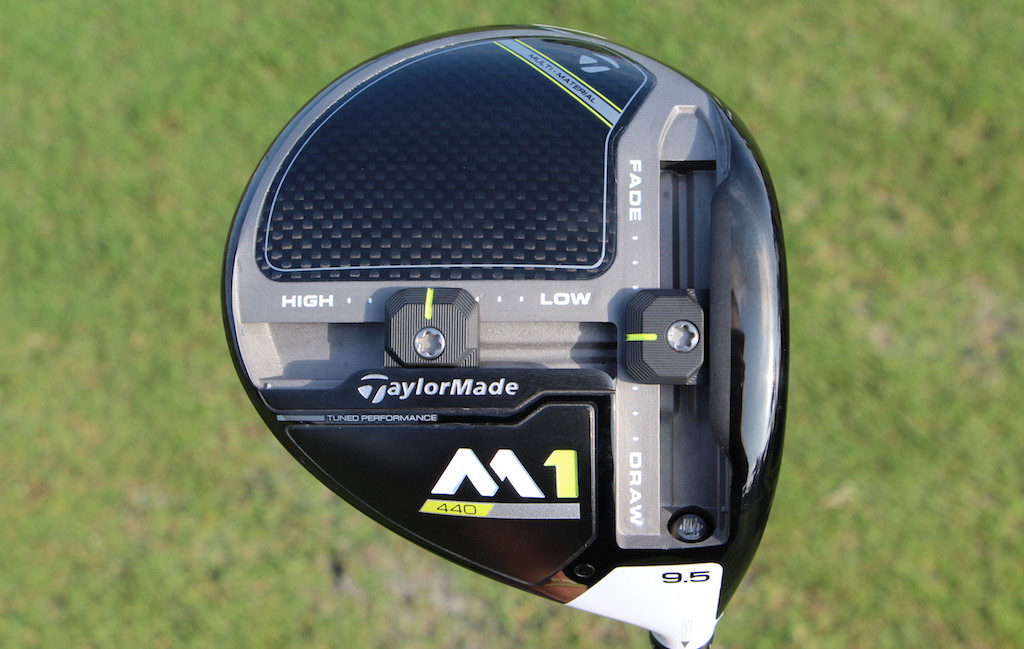












Pingback: Best Driver Golf Jobs - Business Golf Strategies
Joseph
Dec 3, 2014 at 10:13 am
It’s nice to include testers and fitters input but for strictly measuring performance everything can be evaluated by using an “Iron Byron” and a launch monitor. How a club “feels” is too subjective and has no relation to how far or straight a club performs. If you want a club that goes far and straight then Ping G25…most forgiving and highest ball speed. If you have brand loyalty or like the way another club “feels” then go with that. If you really want a long forgiving driver check out the new Ping G30. It’s off the charts amazing.
Pingback: Cobra Fly Z and Fly Z+ Drivers, Fairway Woods and Hybrids | Golf Gear Select
Scott
Jul 18, 2014 at 7:59 am
How come the nike driver placed in both forgiveness and distance but not in combined? That’s confusing!?!
Zak Kozuchowski
Jul 18, 2014 at 9:30 am
It was the Covert 2.0 Tour that made our Distance-First list and the Covert 2.0 that made our Forgiveness-First list. They are not the same driver.
Pat
Jul 7, 2014 at 8:31 am
Why does the ping25 always make me do fades
Brian
Aug 2, 2014 at 5:53 pm
Ping is set with a fade bias – I had an I20 I returned when I learned this – just personally on’t care for that open a setup.
Ben
Aug 17, 2014 at 8:09 pm
That’s because you hit a fade not the clubs fault
MIKE
Sep 10, 2014 at 7:19 pm
WHERES THE LIKE BUTTON FOR THE ABOVE COMMENT?
Desmond
Jul 6, 2014 at 8:24 pm
Thanks for the reviews — this is an innovative and equitable way of listing equipment.
May I add another in the distance and forgiveness categories? At least for me … I had my R1 w/Oban Revenge ($650) set at 12 deg/45 in against a stock Bobby Jones Blackbird ($350) at 12.5/45 in. I was surprised to find the new Bobby Jones not only more consistent in terms of a fairway finder but longer than the R1 for me … at half the price. The only con to the Black being the louder sound. Thought I’d mention it … Opened my eyes …perhaps the weight low and back (and cup faced) still has lots of life … G30 is next, but I am liking this cup face with Jesse Ortiz’s new driver.
Dan M
May 31, 2014 at 10:22 am
Thanks for the Gear Trial review. I like the approach to the evaluation, combining expert opinion with the actual testing experience. I will use the rankings to help identify a new driver for me.
Dan M
Jun 6, 2014 at 6:12 am
Callaway has reduced the price on the X2Hot so I test drove and purchased one. Very happy, performs as the review describes. More forgiving than the RFE I was playing, but longer too. My best driving day in years with this driver.
Sig nal
May 14, 2014 at 10:27 am
No love for the Cleveland, Adams, etc etc etc. Typical review of the over supplied, over priced and only out for 2 months before a new is launched OEMS. The SLDR might be the biggest piece of junk that TM has ever released(for a amateur player) titleist and ping are pretty much the only ones on this list that still have a 1-2 yr rotation. Joke
ChrisG
Apr 29, 2014 at 12:55 pm
Head to head testing is always difficult to do when considering the human element. At least GolfWRK put together something that is close to a controlled comparison of these clubs. While this test only focused on clubs from the major OEM companies, there are a lot of hobby builders and other golfers that use component (not clone) clubs. I would really like to see how clubs from lesser known OEM’s like Golfworks, Wishon, Hireko, Geek, Krank, etc. compare to each other as well as the big name companies. Or would that hurt big company sales because people would see that they can spend $100 to get $400 worth of performance?
Cricket
May 5, 2014 at 1:11 am
Chirp chirp
snowmanan
Apr 27, 2014 at 11:27 am
Whats the definition of “moderate club head speed” ?? (X2 Hot review – fitter feedback)
Zak Kozuchowski
Apr 27, 2014 at 2:08 pm
Under 105 mph
Rich
Apr 27, 2014 at 8:24 pm
Really? I would have thought it would be lower than that.
Dan M
May 31, 2014 at 10:24 am
I agree the testing is skewed to higher swing speeds. That’s the one drawback for me. Testers used 9.5* lofted clubs with stiff shafts.
Zak Kozuchowski
May 31, 2014 at 12:12 pm
Dan,
I understand how you could come to that conclusion, but it’s not true that our test is skewed to higher swing speed players. Unlike other club tests, we only only use the club test to evaluate the launch, spin, ball speed, forgiveness and dispersion between the different models, not to evaluate carry or distance. This allows us to have as many controls as possible to create the most accurate comparison between the models. From there, we lean on out panel of elite custom fitters to identify what models are performing best for a wide range of golfers in fitting sessions.
BC
Apr 27, 2014 at 10:28 am
i love golf
JCC
Apr 27, 2014 at 8:50 am
Excellent job with an extremely difficult subject that is almost as difficult as herding cats! You’ve given anybody looking for a new driver a starting point to begin their search for perfection. Since it boils down to what “feels right” to each individual they may or may not wind up with one of your top five. I spent over 5 hours trying different drivers (including all those mentioned in your article plus a number of others) and getting feedback from the stores equipment on each swing. I ultimately wound up with one of the models in your top 5 balanced category. There were several others that I liked but none as well as the one I eventually purchased. Keep up the good work.
Brad Ingarfield
Apr 26, 2014 at 10:18 pm
I love the G25. Long and forgiving. Ping has done a great job with their shaft design. – Brad Ingarfield
froneputt
Apr 25, 2014 at 2:27 pm
And what happened to plain new Big Bertha?
christian
Apr 25, 2014 at 11:09 am
First adjustable driver = Nakashima and NOT TM
Lowest and furthest back CG = Ryoma, and NOT G25
steve simonds
Apr 25, 2014 at 1:11 pm
i owned the nakashima in question and you are correct but i believe they are only counting the mass produced drivers, not custom clubs.
christian
Apr 25, 2014 at 7:26 pm
No, they are just licking the you know what of the large OEMs that advertise alot
David Coupe
May 26, 2014 at 1:19 am
It said its TMs first adjustable driver. If you’d READ…
B.Boston
Apr 24, 2014 at 1:15 pm
Are you guys going to do this for irons/woods/hybrids too? I think that would be pretty cool!
Zak Kozuchowski
Apr 24, 2014 at 7:15 pm
Stay tuned!
Rich
Apr 24, 2014 at 9:24 am
Patrick, You are correct in that you can not have a ball spin around two spin axis at the same time. There is only ever one spin axis for a ball in flight. However, that spin axis can either be perfectly horizontal, creating backspin only, or at an angle, creating backspin and side spin at the same time. You can independently measure the side spin of a ball depending on the angle of that spin axis. The closer to horizontal the spin axis is, the less side spin there is on the ball. As the spin axis becomes more vertical, the side spin increases. The total spin of the golf ball can be separated into the contributions from the side spin and the backspin. You would have to look up some vector physics to work it out but it could be done. Cheers
tlmck
Apr 24, 2014 at 3:39 am
I’m sorry, but this article just seems like an ad for all the latest drivers guised as a contest.
I have tested all the new ones and they either look or feel like crap. In addition, none of them give me better numbers than my Cleveland XL. I was particularly excited to try, and subsequently disappointed in, the SLDR. The pro tried several combinations, and my XL still beat it. The closest competitor was the JetSpeed, but even it fell short and also had that huge ugly head. Decent feel though.
golfa8
Apr 23, 2014 at 6:49 pm
What about the Mizuno JPX EZ?
gunmetal
Apr 26, 2014 at 4:24 pm
They forgot to send in a check.
Killer driver that performs just as good as any of the above.
Gerry
Apr 23, 2014 at 4:55 pm
Testing drivers is fine, but 30% of your choice should depend on whether you like the head and sound of the hit, 70% should depend on the correct shaft choice.
Scooter McGavin
Apr 24, 2014 at 3:17 pm
What percentage is how the ball actually flies?
Uphill both ways
Nov 1, 2014 at 9:46 pm
genius.
Christian
Apr 23, 2014 at 4:37 pm
I still play the 975J. I had a 983K with legit 757 x-flex and then a 907D2 w/ Diamana Blue x-flex, and then a 910D3 with purple Oban Kiyoshi x-flex. I went back to the 975J with GD stiff… Hit the ball to all the same places. It’s not the clubs ladies and gentlemen, it’s the ball.
This post was not a joke. Try it with one of your old clubs and see what you find.
Jason
May 27, 2014 at 12:26 pm
Yeah somewhat true- I’d say its the player and fit of the build, but the new balls are amazing,too. The 975D/speeder 757 I had for years could probably put it out there with any new club when I pure it, but I suck now and need a little more forgiveness. The product description of these old drivers on Titleist site is epic btw.
Jim
Apr 23, 2014 at 3:43 pm
I enjoyed this article and appreciate the time and effort you expended to provide it for us. I have played the Ping G25 driver in six rounds so far this year and love it. I am sure the other clubs mentioned in each category are loved by those who are using them as well. The negative comments being offered are sad and usually reserved for those who wish to argue political views. Thanks Zak and WRX for all the info you provide.
Zak Kozuchowski
Apr 23, 2014 at 4:06 pm
Thank you for reading, Jim!
Bill
Apr 23, 2014 at 2:38 pm
I am not a Nike fan, but how can you list the Nike Covert 2.0 as one on the best for “Distance” and one of the best for “Forgiveness”, and not list it in the “Balance-Performance” category which is suppose to be the best of the mix?
Zak Kozuchowski
Apr 23, 2014 at 2:39 pm
Bill,
If you look closely, you’ll see that it was the Covert 2.0 Tour driver that was listed for “Distance-First,” and the Covert 2.0 (Performance) driver that was listed for “Forgiveness-First.”
Ronald Montesano
Apr 23, 2014 at 1:31 pm
Ladies and Gents…Take a test drive with these two clubs. I happen to love them, as you might gather from my evaluative articles:
http://www.golfwrx.com/150084/review-cleveland-588-altitude-driver/
and
http://www.golfwrx.com/171195/review-cleveland-588-custom-driver/
antonio
Apr 23, 2014 at 1:29 pm
Thanks guys for the effort but the way the test has been conducted and results shown makes it absolutely worthless as it does not provide any new info not previously presented in the product reviews.
Regis
Apr 23, 2014 at 1:04 pm
I’ve read this a couple of times and suspect I missed something. Your intro reads “Each driver was tested with its stock s-flex shaft and set as close to the stock loft of 9.5 degrees as possible”. Are you saying that all 33 testers were given 9.5 lofted stiff shafted clubs and then “fit” and then the results were compiled ? Forgive me but that doesn’t make sense especially with certain manufacturers advising players to “loft up” so as to achieve maximum performance
Zak Kozuchowski
Apr 23, 2014 at 2:24 pm
Regis,
You make a good point, but the purpose of the player test was not to see what driver was the best for each player or what driver was easiest to fit. We had feedback from our panel of custom fitters for that. It was performed so that we could accurately chart the forgiveness, launch and spin of each driver in a clear and concise way.
Looking to lower your spin? TaylorMade SLDR, Callaway Big Bertha Alpha and Ping i25 are awesome at that. Looking to raise your launch angle? Ping G25, Cobra Bio Cell, Titleist 913D2 and Callaway X2 Hot are likely the ones you’ll want to try first.
Rob
Apr 23, 2014 at 12:33 pm
This is a biased column. As an experienced custom fitter my self have found many drivers not on this list to out perform ones that are on it. Using a launch monitor and doing fittings on a daily basis with only the drivers above would be doing my customer a disservice. This column looks like you guys called up each company and asked them how much they wanted to pay for their driver to make this list. GolfWRX seems as if it is being controlled more and more by the companies you talk about. Not by the consumer as it once was.
Zak Kozuchowski
Apr 23, 2014 at 2:25 pm
So we forgot to call the companies that didn’t make the list?
Nawlins
Apr 23, 2014 at 11:46 am
I’ve been a long time Taylormade driver player. I switched to the Callaway Xhot2 and it is undoubtadly the best driver I’ve every owned. Try it.
Cal
Apr 23, 2014 at 11:17 am
No 588 Custom driver from Cleveland? You guys sure are missing out.
Zak Kozuchowski
Apr 23, 2014 at 2:26 pm
It’s a good one, as Ron noted in his comment/review above, but it didn’t quite make the cut this year.
Roberto
Apr 23, 2014 at 9:03 am
I have played the alpha, ping i25, 913, sldr and cobra bio plus this year. All these have also been fitted by one of your fitting centers listed above. The cobra bio plus is the best numbers club of 2014 by far. Cobra is never given the respect they deserve, this year especially, and I will say I have never liked cobra. The bio plus beats several drivers on the list. The fitter and I did notice ghat the shaft does play a flex down, do if you play stiff get an extra stiff. There is not one person who can be disappointed w this club, long, forgiving, extremely low spin rates
Zak Kozuchowski
Apr 23, 2014 at 2:29 pm
Roberto,
Good point about the Bio Cell +’s shaft. We’ve noticed that trend as well.
The Bio Cell +’s biggest weakness actually is how good the Bio Cell is. The drivers are extremely similar, except that the Bio Cell + launches just a touch lower and with about 300 rpm less spin. For golfers that can handle a 440cc head and can’t get their spin down with the Bio Cell, the Bio Cell + is a great option.
Roberto
Apr 28, 2014 at 10:45 am
Thanks for the response. What people have to remember is that golf clubs are so personal to what we personally think is feel, etc that they must keep an open perspective on this. I would have never tried bio plus and one day fitter at carls said just try it and I did , solved my expensive search after sldr, alpha etc. So keep up the good work and looking forward seeing this on irons, hybrids, fairways, wedges and putters.
Question, what difference are there in the i25 and bio plus? Shaft quality, playability, ease/forgiveness, launch and spin, performance and everything you look at and even personal opinion, etc.
Any info greatly appreciated.
Zak Kozuchowski
Apr 28, 2014 at 11:12 am
The only way to know is to hit them side-by-side and find out. Both drivers are designed for a similar player: one who needs a little less spin than more forgiving models like the Bio Cell and G25 can provide. Another good alternative might be the new Bio Cell Pro, which will be released on May 1. We’re looking forward to testing that driver.
http://www.golfwrx.com/205409/cobra-to-release-new-bio-cell-pro-driver/
Perry
Apr 23, 2014 at 5:07 am
Totally predictable. Back handlers all the way. Suckers believe this manure.
Thomas
Apr 23, 2014 at 2:48 am
And the winner is….
Charlie
Apr 22, 2014 at 11:18 pm
I am confused. Which driver won in each category? Is it the first one they talked about or the last?
Zak Kozuchowski
Apr 23, 2014 at 2:32 pm
Charlie,
The winning driver is the one that works best for you. If you’re looking to upgrade, hit all the drivers in the category that fits you game and see which one performs best.
It would be even better if you could visit a reputable custom fitter with a wide variety of head and shaft options. That will help you find the head, shaft, face angle, length, swing weight and grip that’s best for you game.
Sean
Apr 22, 2014 at 8:39 pm
Nicely done. Thank you.
Zak Kozuchowski
Apr 23, 2014 at 2:32 pm
Thank you, Sean! We really appreciate it!
Martin
Apr 22, 2014 at 8:28 pm
No Adams XTD either, a bit surprising given the strong review on site.
Del
Jun 7, 2014 at 8:23 pm
Yeah I’ve just purchased the new Adams Speedline S black after trying most of the above drivers because it was the longest and straightest for me!
Greg
Apr 22, 2014 at 7:48 pm
Why not fit the testers to proper lift and flex? Bizarre.
RobG
Apr 22, 2014 at 6:03 pm
Where is a ranking for controlability? Not everybody who visits this site is a weekend hack that is looking for miss correction and more distance. Some of us are looking for a club that rewards good ball striking and good shots. Which drivers are the easiest to fade or draw and hit higher or lower on command? Which clubs will hold their ball flight in the wind? And which clubs are best suited for players whole want control over forgiveness and length?
I know 95% of the golfers who visit this site fall into the GI or Max GI categories, but please stop forgetting about the other 5% who fit into the player category.
Jim
Apr 22, 2014 at 6:39 pm
I would guess ping i25 for that sir or bertha alpha
Jim
Apr 22, 2014 at 6:57 pm
I forgot about titlest d3
Dnizzle
Apr 23, 2014 at 11:49 am
I have had the D3 since it came out. I’m a 3 handicap who can get under par on some days. I hit the ball average around 300-310 and this driver is the best I have hit!! Distance is just as good as the rest but mainly it’s the ability to shape shots and I can hit it high or low when needed. Also helps me hit that driver off the deck when you want to!!!
Thomas
Apr 22, 2014 at 8:25 pm
No you are wrong! Remember that 98 of all people in this site plays blades with xxxxxxxx-stiff superstrongstiff + insane launching backspin tour irons… So they have not left out 5% they have left out 98 🙂
Tony
Apr 22, 2014 at 5:55 pm
Ping G25 rocks it for me, loads of forgiveness, center hits fly high and true.
Phil
Apr 23, 2014 at 11:29 am
Ditto… Forgiveness is golden, and it’s just as long as anything else.
Zak Kozuchowski
Apr 23, 2014 at 2:33 pm
It’s tough to best when properly fit.
paul
Apr 22, 2014 at 2:11 pm
I was hoping to learn something new here. “these 5 drivers are long”, is not new info. We already know that. How about showing us all the numbers some time. Us younger people are number and stats crazy… generally. If one of the 5 longest was longest for everyone as a whole, why not tell us?
Zak Kozuchowski
Apr 22, 2014 at 2:47 pm
Paul,
The SLDR was voted the longest driver by our panel of custom fitters, and also hit some of the longest drives in our test. At this level of premium drivers (we narrowed down the top-5 drivers out of 22 different models in three different categories in this test), the longest driver for each player is usually player dependent.
Our advice has been and will continue to be that every golfer go through a proper fitting to find out what shaft and head combination is right for them. But golfers will likely find that they won’t need to test many drivers outside of the 10 we’ve listed to find their new gamer.
paul
Apr 22, 2014 at 9:25 pm
Excellent. Thanks Zak. You are very helpful.
Ben
Apr 22, 2014 at 1:02 pm
It would be really cool if you could show 3 different charts with all of the drivers. A launch chart from highest to lowest, a spin chart from Highest to lowest and a forgiveness chart from highest to lowest tested.
Dpavs
Apr 22, 2014 at 12:44 pm
Part of this makes no sense to me… how can drivers that have high spin rates maintain high forgiveness…. the more side spin a driver imparts should = less forgiveness or am I missing something?
Nick
Apr 22, 2014 at 1:28 pm
The spin they are referring to is backspin more than sidespin. Backspin actually will help the ball stay on line, but too much can hurt distance. Hopefully this helps.
Dpavs
Apr 22, 2014 at 2:12 pm
I kind of figured but there is almost always a direct relationship between backspin imparted and sidespin… so it still kind of defies reason to me
Brian T
Apr 22, 2014 at 8:32 pm
There is a direct relationship, the ball only spins on one axis, but it is measured in two ways, sidespin and backspin. Think of a fastball vs a curveball. A 4 seamer will travel relatively straight as it has mostly backspin on a vertical axis. A curveball has that vertical axis shifted which causes the ball to curve.
Rich
Apr 23, 2014 at 9:08 am
Sorry Brian, but not correct. A 4 seamer will travel with mostly backspin in a horizontal axis. A ball can not have backspin with a vertical axis. If it was rotating around a vertical axis, it would have side spin on it, which ever direction it was spinning. Cheers
Patrick
Apr 23, 2014 at 10:15 am
It is not possible for side spin and back spin to be measured at the same time. If a golf professional is giving you a side spin number in addition to a back spin number, you may want to consider asking your golf professional to explain. A golf ball cannot spin about two different axes at the same time. There is spin rate and spin axis.
Due to how drivers need to be shaped, it is harder to push CG back and keep it low. It is much easier to achieve a low cg if you put it all up at the front of the head (Taylormade). With the CG slightly higher as it relates to the loft of the face, you will get slightly more vertical gear effect causing more spin. It will be more forgiving because of the CG’s location as it relates to the shaft’s axis (more squaring power) and increased MOI (ball speed on mishits). It will also be more forgiving and slightly higher spinning because a deep CG creates a longer distance for the head to deflect forward through the impact area. This will lead to more dynamic loft (increasing forgiveness) and potentially more spin loft (increasing spin).
Dave S
Apr 22, 2014 at 2:27 pm
What you are saying makes sense, but I think the idea of “Forgiveness” in tests like these deal more with good swings that happen to hit the ball somewhere other than the center of the face… in those cases, with many drivers you’ll lose distance or the MOI will cause the fact to twist, imparting additional “side-spin” (this is a fictional concept; it’s really just the angle of the ball while spinning backwards). If you have a bad swing and say, come over the top w/ an open face, no driver, no matter how “forgiving” is going to save you. Just my thoughts… I’d of course look to the author of this article to chime in on its validity.
Zak Kozuchowski
Apr 22, 2014 at 2:39 pm
Dave,
You are correct. Our “forgiveness” rating is meant to represent average ball speed over a range of shots. When shots are hit off center, the head twists, which hinders ball speed. Drivers with the highest MOI, or highest levels of forgiveness, will have the least drop off in ball speed on off-center hits.
The G25 was voted the most forgiving driver by our custom fitters, and also had the highest average ball speeds in our test.
Dpavs
Apr 23, 2014 at 11:32 am
So was the only criteria measured MOI?
Or were the testers actually intentionally trying to hit off center and then measure the ball speed results?
Zak Kozuchowski
Apr 23, 2014 at 2:34 pm
Dpavs,
The only instructions our testers received was to take their normal swing. You’d be surprised how infrequently even the best golfers in the world hit the sweet spot.
Ben
Apr 22, 2014 at 2:37 pm
The inverse relationship between spin rate and forgiveness is due to cg location. Moving the cg forward would lower the spin and the MOI which would lower forgiveness. Moving the cg back would increase spin as well as MOI.
Dave
Apr 22, 2014 at 12:41 pm
No Bio Cell+ ? Makes Cobra look worse than they actually perform.
Brian T
Apr 22, 2014 at 8:33 pm
There is no way that the bio cell + didn’t crack that top 5.